About Common Pests and Insects in Bahrain
Insects and pests are a major concern for both homes and businesses in Bahrain. They spread diseases, damage property, and create an unhealthy environment. At Buckkillers Pest Control, we believe knowledge is the first step toward protection. This guide helps you identify common pests in Bahrain, understand the risks they pose, and learn how to control them effectively.
Insect Types
Insect Identification
There are over 1 million identified species of insects and spiders in the world with many more still awaiting discovery.Insects provide a vastly overlooked – and often times misunderstood – window into our fragile ecosystem that involves the perfect balance of millions of individual components. In many ways, insects allow for our comfortable existence by providing a plethora of benefits including consumable goods, insect population control, and answers to science’s lingering questions – understanding insects is a small step to understanding the very world we live in.
Expert Insect Control Services in Bahrain – Safe, Fast & Guaranteed
Protect your home or business from unwanted pests with Bahrain’s trusted insect control specialists. We eliminate ants, cockroaches, mosquitoes, flies, and more using eco-friendly treatments and advanced pest management techniques. Whether you’re dealing with a minor infestation or a recurring problem, our certified technicians deliver fast, effective, and long-lasting results. Serving residential, commercial, and industrial properties across Manama and all Bahrain governorates.
Crowing Insect
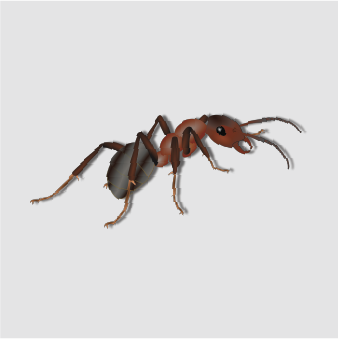
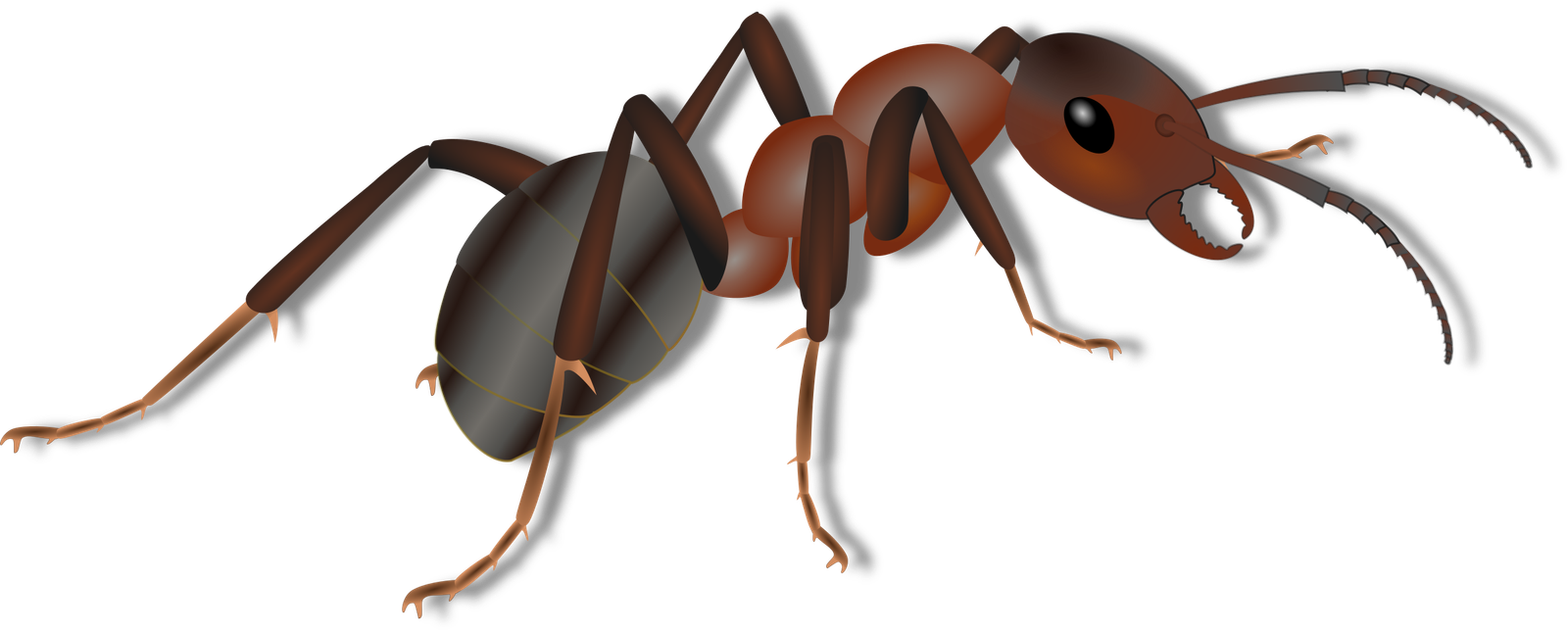 ABOUT ANTS
ABOUT ANTS
Ants are astonishingly diverse! There are over 12,000 known species of ants worldwide, and scientists estimate there could be up to 20,000 in total. These species are grouped into various types based on behavior, habitat, and physical traits.
Here are some of the most common and fascinating types:
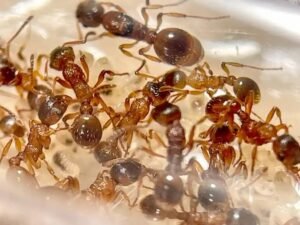 Fire Ant (Solenopsis spp.)
Fire Ant (Solenopsis spp.)
– Appearance: Reddish-brown, small but aggressive.
– Behavior: Known for painful stings that can cause allergic reactions.
– Habitat: Builds mounds in gardens, lawns, and near buildings.
– Risk: Their sting can be medically significant, especially for sensitive individuals.
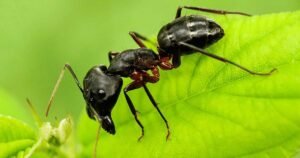 Black House Ant (Ochetellus spp.)
Black House Ant (Ochetellus spp.)
– Appearance: Shiny black, about 4 mm long.
– Behavior: Attracted to sugary substances; often invades homes during hot seasons.
– Habitat: Common in gardens, enters buildings through cracks and crevices.
– Risk: Can sting and release formic acid, triggering mild allergic reactions.
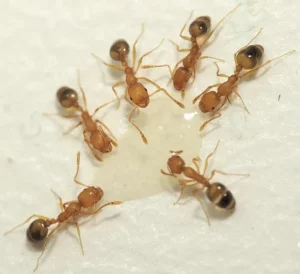 Pharaoh Ant (Monomorium pharaonis)
Pharaoh Ant (Monomorium pharaonis)
– Appearance: Tiny, yellowish-red.
– Behavior: Builds multiple nests, making them hard to eliminate.
– Habitat: Frequently found in hospitals and homes, attracted to protein-rich food.
– Risk: Known to contaminate sterile environments and feed on blood and waste.
Black House Ant (Ochetellus spp.)
– Size: ~4 mm
– Color: Shiny black
– Habitat: Gardens, wall crevices, window frames
– Behavior:
– Attracted to sugary substances
– Enters buildings during hot seasons to escape heat
– Produces formic acid and may sting when disturbed
– Risks:
– Can trigger allergic reactions
– Contaminates food and surfaces
2. Carpenter Ant (Camponotus spp.)
– Size: Up to 1.2 cm — largest ant species in Bahrain
– Color: Black or reddish
– Habitat: Inside wood structures, especially moist or decaying wood
– Behavior:
– Does not eat wood like termites, but excavates it to build nests
– Can create satellite nests, making them hard to eliminate
– Risks:
– Structural damage to buildings
– Often mistaken for termite infestations
Crazy Ant (Paratrechina longicornis)
Crazy Ant
– Life Cycle: Egg → Larva → Pupa → Adult
– Habitat: Indoors and outdoors—wall voids, mulch, trash
– Food: Omnivorous—sweets, proteins, honeydew
– Behavior: Erratic movement, forms supercolonies, nests far from food
– Human Impact: Can damage electronics; hard to control
– Treatment: Use granular baits (abamectin, hydramethylnon), perimeter sprays (fipronil, bifenthrin)
🏠 3. Odorous House Ant (Tapinoma sessile)
Odorous House Ant
– Life Cycle: Egg → Larva → Pupa → Adult
– Habitat: Wall voids, near heaters, leaking pipes
– Food: Sweets, honeydew, household scraps
– Behavior: Emits rotten coconut smell when crushed; trails indoors
– Human Impact: Food contamination, nuisance in homes
– Treatment: Sugar-based gel baits, seal entry points, avoid sprays during baiting
👻 4. Ghost Ant (Tapinoma melanocephalum)
Ghost Ant
– Life Cycle: Egg → Larva → Pupa → Adult
– Habitat: Indoors—wall cracks, potted plants, bathrooms
– Food: Sugars, honeydew, dead insects
– Behavior: Translucent body; hard to spot; forms multiple nests
– Human Impact: Can contaminate food; difficult to detect
– Treatment: Use boric acid baits, monitor trails, treat multiple nest sites
🌾 5. Harvester Ant (Pogonomyrmex spp.)
Harvester Ant
– Life Cycle: Egg → Larva → Pupa → Adult
– Habitat: Dry, open areas; builds large mounds
– Food: Seeds, insects
– Behavior: Seed collectors; aerate soil; painful sting
– Human Impact: Can sting humans; beneficial for ecosystems
– Treatment: Dust insecticides into mound, perimeter sprays, avoid disturbing nests directly
ANTS
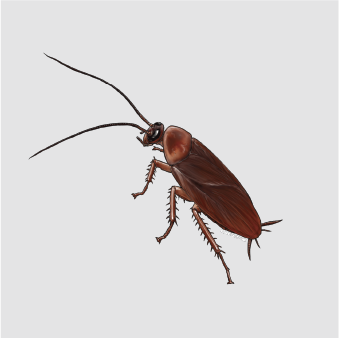
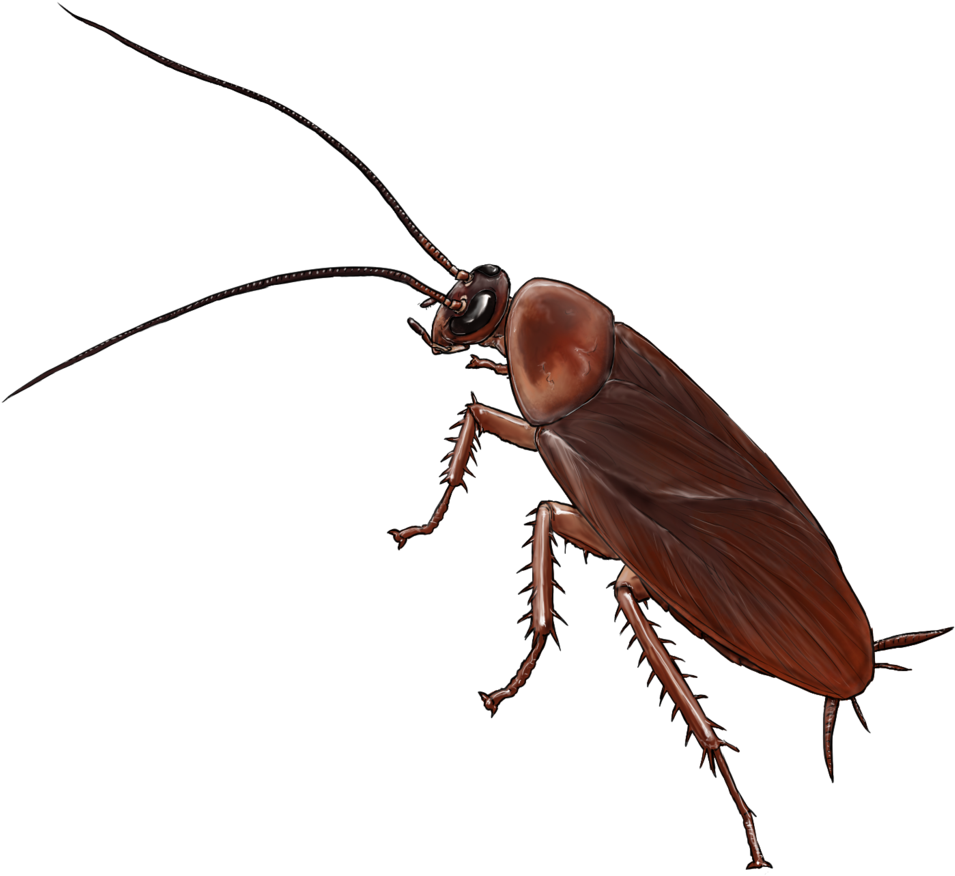 ABOUT ANTS
ABOUT ANTS
🪳 Cockroaches – Everything You Need to Know
Cockroaches are among the most common household pests worldwide. Known for their survival skills and adaptability, these insects have lived on Earth for over 300 million years. While they play a role in the ecosystem, cockroaches inside homes and businesses can cause serious health risks and require immediate pest control.
🔹 What Are Cockroaches?
Belong to the order Blattodea.
More than 4,600 species, but only around 30 species infest human environments.
Highly adaptable, thriving in warm, humid, and dark spaces.
👉 SEO Keywords: cockroach infestation, cockroach pest control, cockroaches in Bahrain
🔹 Physical Characteristics
Body shape: Flat, oval, reddish-brown or black.
Size: From a few millimeters to over 5 cm (American cockroach).
Legs: 6 strong spiny legs for fast running.
Antennae: Long and highly sensitive.
Wings: Some species fly, but most prefer crawling.
🔹 Life Cycle of Cockroaches
Cockroaches go through incomplete metamorphosis:
Eggs (Ootheca) – Protective case containing multiple eggs.
Nymphs – Small, wingless versions of adults.
Adults – Fully developed, capable of reproduction.
👉 A single female cockroach can produce hundreds of offspring, leading to rapid infestations.
🔹 Common Types of Cockroaches in Homes & Businesses
German Cockroach – Small, light brown with two stripes, the most common indoor species.
American Cockroach – Large, reddish-brown, often found in drains and basements.
Oriental Cockroach – Dark brown to black, prefers cool, damp areas.
Brown-Banded Cockroach – Small with light bands, often found in furniture and appliances.
Smoky-Brown Cockroach – Dark brown, prefers warm and humid conditions.
👉 SEO Keywords: German cockroach control, American cockroach treatment, cockroach removal services
🔹 Health Risks of Cockroaches
Cockroaches are more than just unpleasant pests – they are a serious health hazard:
Spread diseases like Salmonella, E. coli, and dysentery.
Trigger asthma and allergies (especially in children).
Contaminate food and surfaces with droppings and bacteria.
Produce foul odors that worsen infestations.
🔹 Signs of a Cockroach Infestation
Droppings (tiny black or brown specks).
Egg cases (oothecae) around cupboards and appliances.
Musty, unpleasant odor.
Shed skins or dead cockroaches.
Live cockroaches seen at night.
🔹 How to Prevent Cockroaches
Keep kitchens and storage areas clean and dry.
Seal cracks, holes, and entry points.
Store food in airtight containers.
Fix leaks (cockroaches need water to survive).
Dispose of garbage daily.
🔹 Professional Cockroach Control in Bahrain
DIY sprays may kill a few cockroaches, but infestations often return. For long-lasting results, professional pest control is essential.
At Buckkillers Cleaning Services W.L.L., we offer:
German cockroach treatments for homes, restaurants, and offices.
Safe insecticide applications approved by local health authorities.
Long-term pest management plans for both residential and commercial clients.
Expert technicians with over 18 years of pest control experience in Bahrain.
🔹 Fun Facts About Cockroaches
Cockroaches can live a week without their head.
Can survive without food for a month.
Can hold their breath for 40 minutes.
Have been around since before dinosaurs.
✅ In summary: Cockroaches are ancient survivors but also one of the most dangerous pests in Bahrain. If you see signs of infestation, contact Buckkillers Pest Control Bahrain for reliable and safe solutions.
COCKROACHES
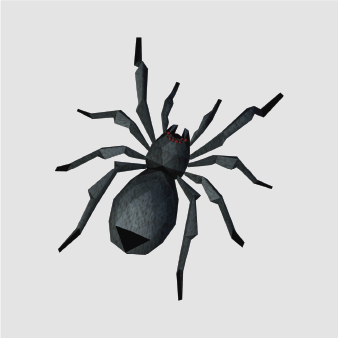
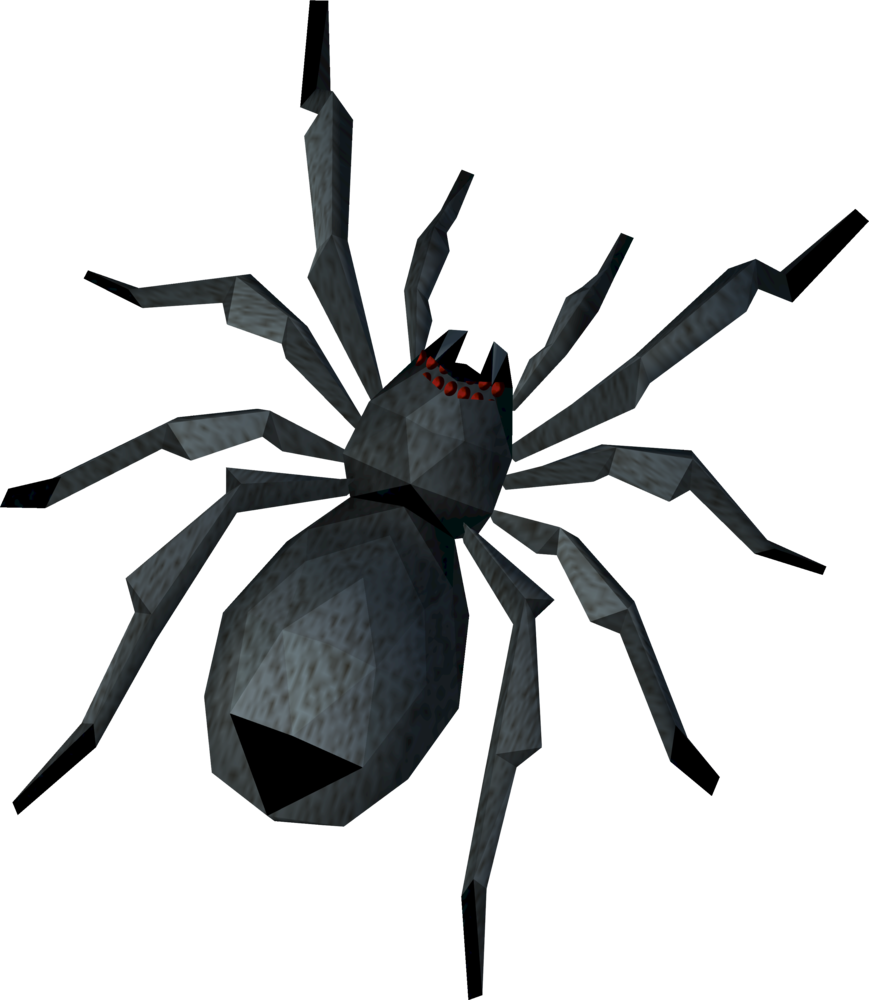 SPIDERS
SPIDERS
Spiders – Everything You Need to Know
Spiders belong to the class Arachnida and are often feared, but most species are harmless. They help control insect populations naturally. In Bahrain, some house spiders can be seen indoors, but only a few species pose health risks.
🔹 Physical Characteristics
8 legs (insects have 6).
2 body segments (cephalothorax & abdomen).
Usually 8 eyes, varying by species.
Fangs with venom to paralyze prey.
🔹 Behavior
Some build webs (orb-weavers, cobweb spiders).
Others actively hunt (wolf spiders, jumping spiders).
Generally shy and avoid humans.
🔹 Benefits of Spiders
Natural pest control (mosquitoes, flies, cockroaches).
🔹 Risks
Bites from certain species (Black Widow, Brown Recluse) can be harmful, though dangerous spiders are rare in Bahrain.
SPIDERS
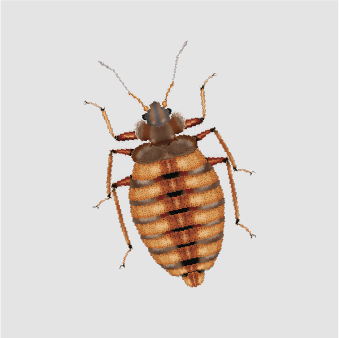
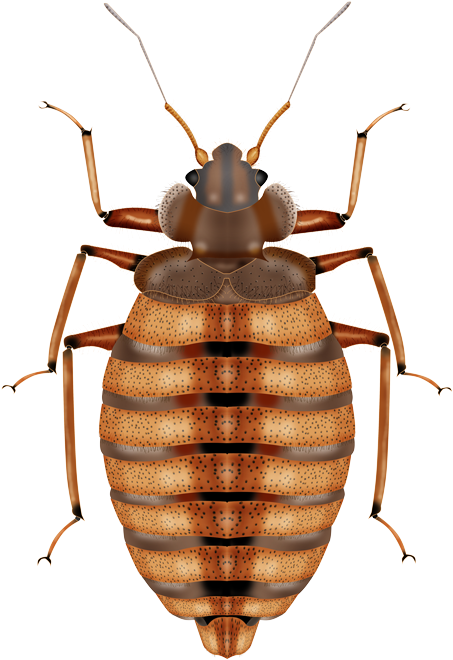 BED BUGS - The Nighttime Biters
BED BUGS - The Nighttime Biters
Description:
Tiny, flat insects that hide in beds, furniture, and cracks. They feed on human blood at night. Risks/Dangers: Cause itchy bites, allergic reactions, and sleepless nights.
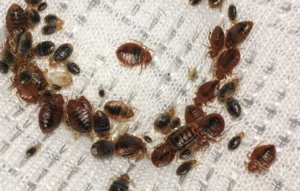 Signs of Infestation:
Signs of Infestation:
Small blood stains on sheets, itchy bites, visible bugs in mattress seams.
Prevention Tips:
Regularly inspect bedding, avoid second-hand furniture, wash fabrics in hot water.
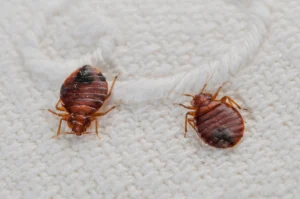 Buckkillers Solution:
Buckkillers Solution:
We use specialized heat and chemical treatments to completely remove bed bugs.
Bed bugs are small, blood-sucking pests that infest mattresses, furniture, and upholstery. They are a growing problem in Bahrain due to travel and shared housing.
🔹 Physical Characteristics
Small, oval, reddish-brown insects (4–6 mm).
Hide in cracks, mattresses, furniture seams.
Active mostly at night.
🔹 Signs of Infestation
Small, itchy bites on skin.
Blood stains on sheets.
Shed skins or tiny black spots (feces) near beds.
🔹 Risks
Cause itching, allergic reactions, and sleeplessness.
Spread quickly between apartments and hotels.
🔹 Control
Washing and heat-treating infested fabrics.
Professional pest control treatments required.
BED BUGS
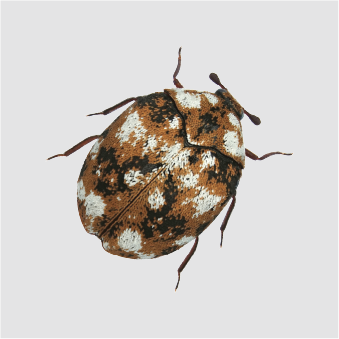
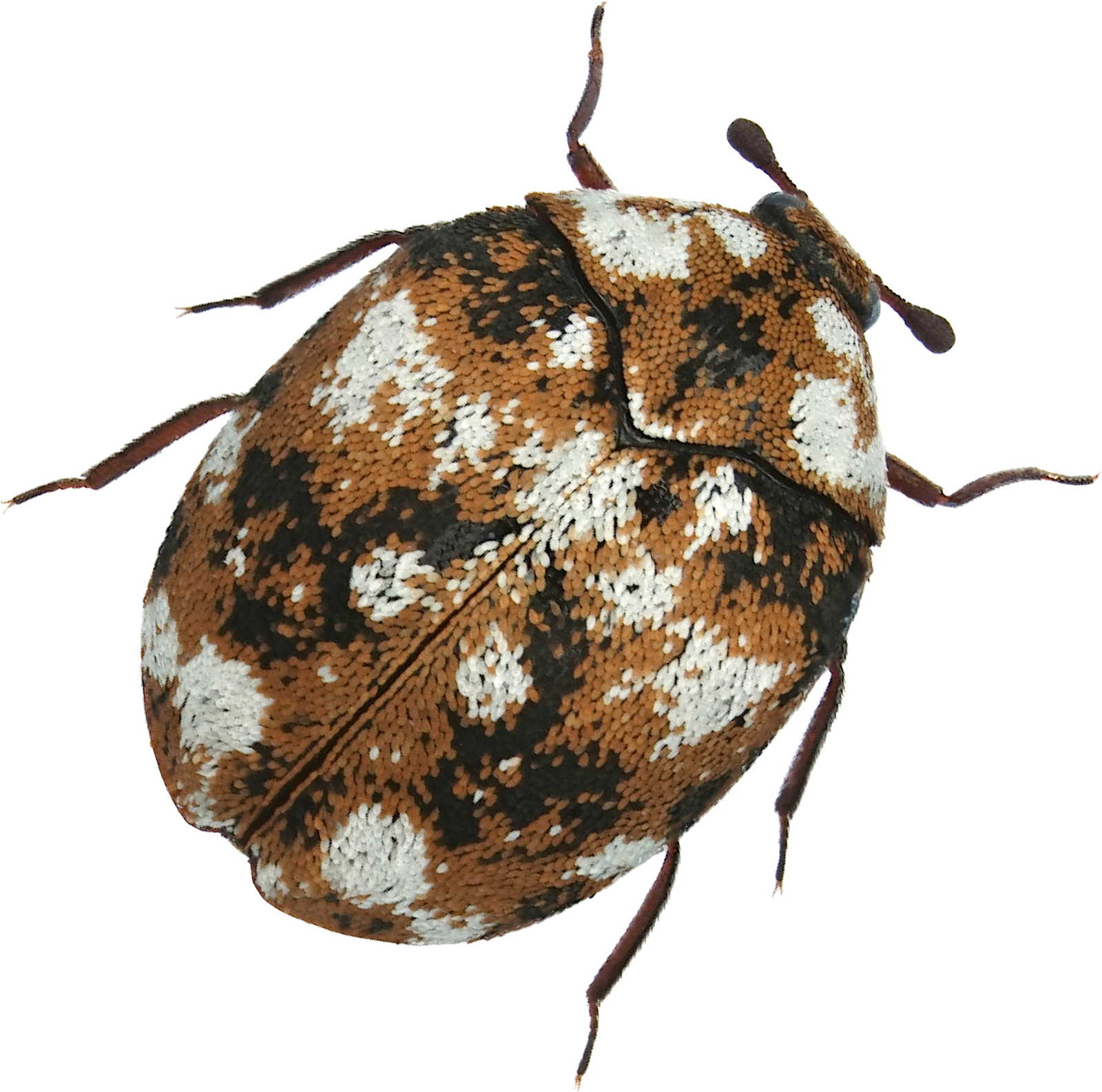 BEETLE
BEETLE
Ants are astonishingly diverse! There are over 12,000 known species of ants worldwide, and scientists estimate there could be up to 20,000 in total. These species are grouped into various types based on behavior, habitat, and physical traits.
Here are some of the most common and fascinating types:
 Fire Ant (Solenopsis spp.)
Fire Ant (Solenopsis spp.)
– Appearance: Reddish-brown, small but aggressive.
– Behavior: Known for painful stings that can cause allergic reactions.
– Habitat: Builds mounds in gardens, lawns, and near buildings.
– Risk: Their sting can be medically significant, especially for sensitive individuals.
 Black House Ant (Ochetellus spp.)
Black House Ant (Ochetellus spp.)
– Appearance: Shiny black, about 4 mm long.
– Behavior: Attracted to sugary substances; often invades homes during hot seasons.
– Habitat: Common in gardens, enters buildings through cracks and crevices.
– Risk: Can sting and release formic acid, triggering mild allergic reactions.
 Pharaoh Ant (Monomorium pharaonis)
Pharaoh Ant (Monomorium pharaonis)
– Appearance: Tiny, yellowish-red.
– Behavior: Builds multiple nests, making them hard to eliminate.
– Habitat: Frequently found in hospitals and homes, attracted to protein-rich food.
– Risk: Known to contaminate sterile environments and feed on blood and waste.
Black House Ant (Ochetellus spp.)
– Size: ~4 mm
– Color: Shiny black
– Habitat: Gardens, wall crevices, window frames
– Behavior:
– Attracted to sugary substances
– Enters buildings during hot seasons to escape heat
– Produces formic acid and may sting when disturbed
– Risks:
– Can trigger allergic reactions
– Contaminates food and surfaces
2. Carpenter Ant (Camponotus spp.)
– Size: Up to 1.2 cm — largest ant species in Bahrain
– Color: Black or reddish
– Habitat: Inside wood structures, especially moist or decaying wood
– Behavior:
– Does not eat wood like termites, but excavates it to build nests
– Can create satellite nests, making them hard to eliminate
– Risks:
– Structural damage to buildings
– Often mistaken for termite infestations
Crazy Ant (Paratrechina longicornis)
Crazy Ant
– Life Cycle: Egg → Larva → Pupa → Adult
– Habitat: Indoors and outdoors—wall voids, mulch, trash
– Food: Omnivorous—sweets, proteins, honeydew
– Behavior: Erratic movement, forms supercolonies, nests far from food
– Human Impact: Can damage electronics; hard to control
– Treatment: Use granular baits (abamectin, hydramethylnon), perimeter sprays (fipronil, bifenthrin)
🏠 3. Odorous House Ant (Tapinoma sessile)
Odorous House Ant
– Life Cycle: Egg → Larva → Pupa → Adult
– Habitat: Wall voids, near heaters, leaking pipes
– Food: Sweets, honeydew, household scraps
– Behavior: Emits rotten coconut smell when crushed; trails indoors
– Human Impact: Food contamination, nuisance in homes
– Treatment: Sugar-based gel baits, seal entry points, avoid sprays during baiting
👻 4. Ghost Ant (Tapinoma melanocephalum)
Ghost Ant
– Life Cycle: Egg → Larva → Pupa → Adult
– Habitat: Indoors—wall cracks, potted plants, bathrooms
– Food: Sugars, honeydew, dead insects
– Behavior: Translucent body; hard to spot; forms multiple nests
– Human Impact: Can contaminate food; difficult to detect
– Treatment: Use boric acid baits, monitor trails, treat multiple nest sites
🌾 5. Harvester Ant (Pogonomyrmex spp.)
Harvester Ant
– Life Cycle: Egg → Larva → Pupa → Adult
– Habitat: Dry, open areas; builds large mounds
– Food: Seeds, insects
– Behavior: Seed collectors; aerate soil; painful sting
– Human Impact: Can sting humans; beneficial for ecosystems
– Treatment: Dust insecticides into mound, perimeter sprays, avoid disturbing nests directly
BEETLE
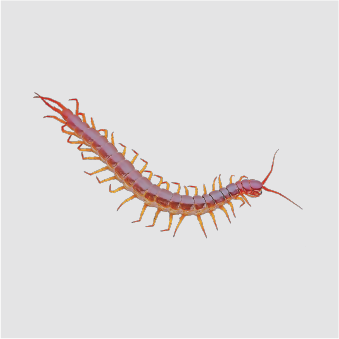
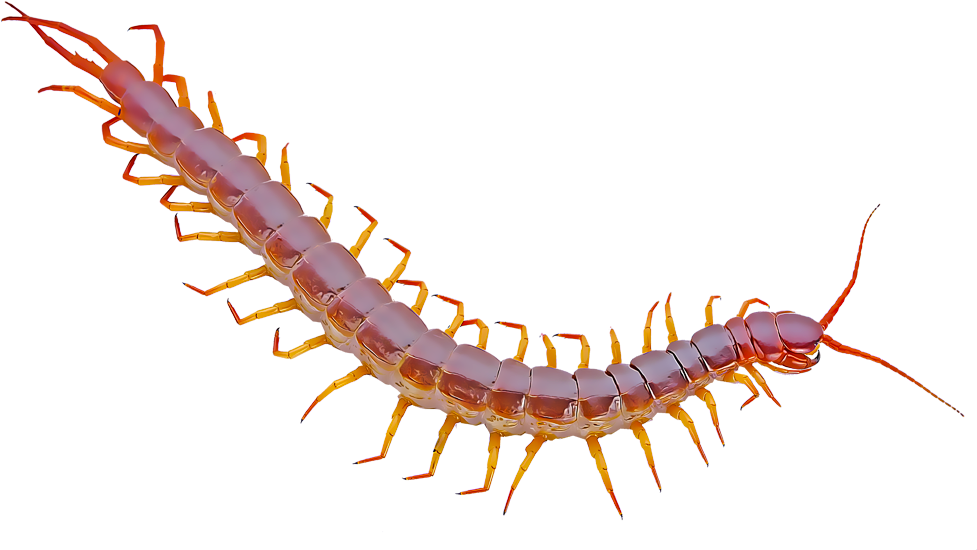 Centipedes
Centipedes
🪳 Cockroaches – Everything You Need to Know
Cockroaches are among the most common household pests worldwide. Known for their survival skills and adaptability, these insects have lived on Earth for over 300 million years. While they play a role in the ecosystem, cockroaches inside homes and businesses can cause serious health risks and require immediate pest control.
🔹 What Are Cockroaches?
Belong to the order Blattodea.
More than 4,600 species, but only around 30 species infest human environments.
Highly adaptable, thriving in warm, humid, and dark spaces.
👉 SEO Keywords: cockroach infestation, cockroach pest control, cockroaches in Bahrain
🔹 Physical Characteristics
Body shape: Flat, oval, reddish-brown or black.
Size: From a few millimeters to over 5 cm (American cockroach).
Legs: 6 strong spiny legs for fast running.
Antennae: Long and highly sensitive.
Wings: Some species fly, but most prefer crawling.
🔹 Life Cycle of Cockroaches
Cockroaches go through incomplete metamorphosis:
Eggs (Ootheca) – Protective case containing multiple eggs.
Nymphs – Small, wingless versions of adults.
Adults – Fully developed, capable of reproduction.
👉 A single female cockroach can produce hundreds of offspring, leading to rapid infestations.
🔹 Common Types of Cockroaches in Homes & Businesses
German Cockroach – Small, light brown with two stripes, the most common indoor species.
American Cockroach – Large, reddish-brown, often found in drains and basements.
Oriental Cockroach – Dark brown to black, prefers cool, damp areas.
Brown-Banded Cockroach – Small with light bands, often found in furniture and appliances.
Smoky-Brown Cockroach – Dark brown, prefers warm and humid conditions.
👉 SEO Keywords: German cockroach control, American cockroach treatment, cockroach removal services
🔹 Health Risks of Cockroaches
Cockroaches are more than just unpleasant pests – they are a serious health hazard:
Spread diseases like Salmonella, E. coli, and dysentery.
Trigger asthma and allergies (especially in children).
Contaminate food and surfaces with droppings and bacteria.
Produce foul odors that worsen infestations.
🔹 Signs of a Cockroach Infestation
Droppings (tiny black or brown specks).
Egg cases (oothecae) around cupboards and appliances.
Musty, unpleasant odor.
Shed skins or dead cockroaches.
Live cockroaches seen at night.
🔹 How to Prevent Cockroaches
Keep kitchens and storage areas clean and dry.
Seal cracks, holes, and entry points.
Store food in airtight containers.
Fix leaks (cockroaches need water to survive).
Dispose of garbage daily.
🔹 Professional Cockroach Control in Bahrain
DIY sprays may kill a few cockroaches, but infestations often return. For long-lasting results, professional pest control is essential.
At Buckkillers Cleaning Services W.L.L., we offer:
German cockroach treatments for homes, restaurants, and offices.
Safe insecticide applications approved by local health authorities.
Long-term pest management plans for both residential and commercial clients.
Expert technicians with over 18 years of pest control experience in Bahrain.
🔹 Fun Facts About Cockroaches
Cockroaches can live a week without their head.
Can survive without food for a month.
Can hold their breath for 40 minutes.
Have been around since before dinosaurs.
✅ In summary: Cockroaches are ancient survivors but also one of the most dangerous pests in Bahrain. If you see signs of infestation, contact Buckkillers Pest Control Bahrain for reliable and safe solutions.
Centipedes
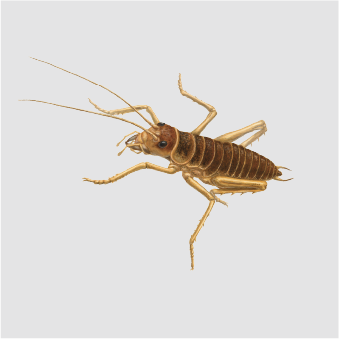
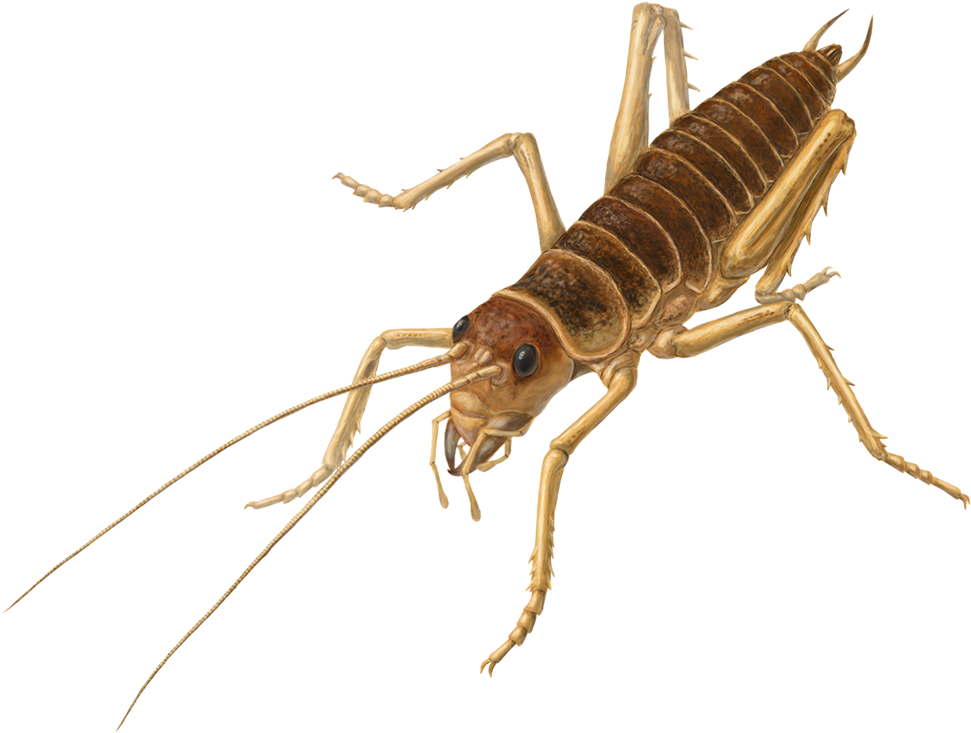 Crickets
Crickets
Spiders – Everything You Need to Know
Spiders belong to the class Arachnida and are often feared, but most species are harmless. They help control insect populations naturally. In Bahrain, some house spiders can be seen indoors, but only a few species pose health risks.
🔹 Physical Characteristics
8 legs (insects have 6).
2 body segments (cephalothorax & abdomen).
Usually 8 eyes, varying by species.
Fangs with venom to paralyze prey.
🔹 Behavior
Some build webs (orb-weavers, cobweb spiders).
Others actively hunt (wolf spiders, jumping spiders).
Generally shy and avoid humans.
🔹 Benefits of Spiders
Natural pest control (mosquitoes, flies, cockroaches).
🔹 Risks
Bites from certain species (Black Widow, Brown Recluse) can be harmful, though dangerous spiders are rare in Bahrain.
Crickets
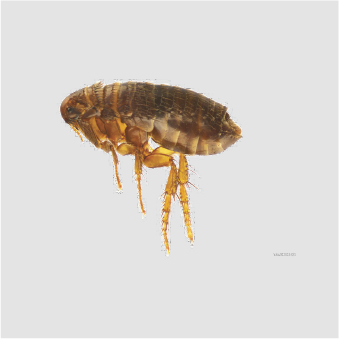
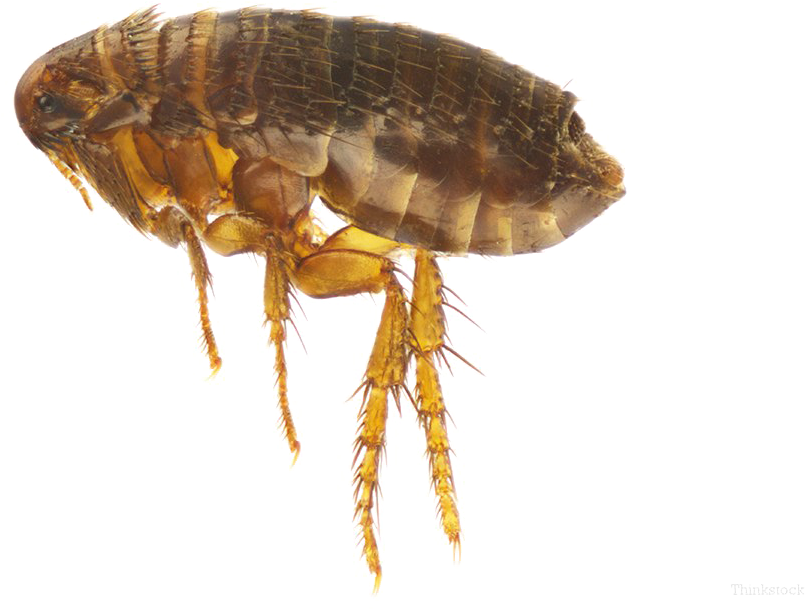 Fleas
Fleas
Description:
Tiny, flat insects that hide in beds, furniture, and cracks. They feed on human blood at night. Risks/Dangers: Cause itchy bites, allergic reactions, and sleepless nights.
 Signs of Infestation:
Signs of Infestation:
Small blood stains on sheets, itchy bites, visible bugs in mattress seams.
Prevention Tips:
Regularly inspect bedding, avoid second-hand furniture, wash fabrics in hot water.
 Buckkillers Solution:
Buckkillers Solution:
We use specialized heat and chemical treatments to completely remove bed bugs.
Bed bugs are small, blood-sucking pests that infest mattresses, furniture, and upholstery. They are a growing problem in Bahrain due to travel and shared housing.
🔹 Physical Characteristics
Small, oval, reddish-brown insects (4–6 mm).
Hide in cracks, mattresses, furniture seams.
Active mostly at night.
🔹 Signs of Infestation
Small, itchy bites on skin.
Blood stains on sheets.
Shed skins or tiny black spots (feces) near beds.
🔹 Risks
Cause itching, allergic reactions, and sleeplessness.
Spread quickly between apartments and hotels.
🔹 Control
Washing and heat-treating infested fabrics.
Professional pest control treatments required.
Fleas
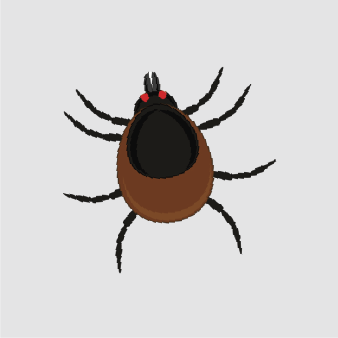
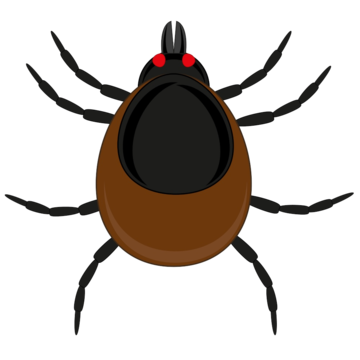 Mites
Mites
Ants are astonishingly diverse! There are over 12,000 known species of ants worldwide, and scientists estimate there could be up to 20,000 in total. These species are grouped into various types based on behavior, habitat, and physical traits.
Here are some of the most common and fascinating types:
 Fire Ant (Solenopsis spp.)
Fire Ant (Solenopsis spp.)
– Appearance: Reddish-brown, small but aggressive.
– Behavior: Known for painful stings that can cause allergic reactions.
– Habitat: Builds mounds in gardens, lawns, and near buildings.
– Risk: Their sting can be medically significant, especially for sensitive individuals.
 Black House Ant (Ochetellus spp.)
Black House Ant (Ochetellus spp.)
– Appearance: Shiny black, about 4 mm long.
– Behavior: Attracted to sugary substances; often invades homes during hot seasons.
– Habitat: Common in gardens, enters buildings through cracks and crevices.
– Risk: Can sting and release formic acid, triggering mild allergic reactions.
 Pharaoh Ant (Monomorium pharaonis)
Pharaoh Ant (Monomorium pharaonis)
– Appearance: Tiny, yellowish-red.
– Behavior: Builds multiple nests, making them hard to eliminate.
– Habitat: Frequently found in hospitals and homes, attracted to protein-rich food.
– Risk: Known to contaminate sterile environments and feed on blood and waste.
Black House Ant (Ochetellus spp.)
– Size: ~4 mm
– Color: Shiny black
– Habitat: Gardens, wall crevices, window frames
– Behavior:
– Attracted to sugary substances
– Enters buildings during hot seasons to escape heat
– Produces formic acid and may sting when disturbed
– Risks:
– Can trigger allergic reactions
– Contaminates food and surfaces
2. Carpenter Ant (Camponotus spp.)
– Size: Up to 1.2 cm — largest ant species in Bahrain
– Color: Black or reddish
– Habitat: Inside wood structures, especially moist or decaying wood
– Behavior:
– Does not eat wood like termites, but excavates it to build nests
– Can create satellite nests, making them hard to eliminate
– Risks:
– Structural damage to buildings
– Often mistaken for termite infestations
Crazy Ant (Paratrechina longicornis)
Crazy Ant
– Life Cycle: Egg → Larva → Pupa → Adult
– Habitat: Indoors and outdoors—wall voids, mulch, trash
– Food: Omnivorous—sweets, proteins, honeydew
– Behavior: Erratic movement, forms supercolonies, nests far from food
– Human Impact: Can damage electronics; hard to control
– Treatment: Use granular baits (abamectin, hydramethylnon), perimeter sprays (fipronil, bifenthrin)
🏠 3. Odorous House Ant (Tapinoma sessile)
Odorous House Ant
– Life Cycle: Egg → Larva → Pupa → Adult
– Habitat: Wall voids, near heaters, leaking pipes
– Food: Sweets, honeydew, household scraps
– Behavior: Emits rotten coconut smell when crushed; trails indoors
– Human Impact: Food contamination, nuisance in homes
– Treatment: Sugar-based gel baits, seal entry points, avoid sprays during baiting
👻 4. Ghost Ant (Tapinoma melanocephalum)
Ghost Ant
– Life Cycle: Egg → Larva → Pupa → Adult
– Habitat: Indoors—wall cracks, potted plants, bathrooms
– Food: Sugars, honeydew, dead insects
– Behavior: Translucent body; hard to spot; forms multiple nests
– Human Impact: Can contaminate food; difficult to detect
– Treatment: Use boric acid baits, monitor trails, treat multiple nest sites
🌾 5. Harvester Ant (Pogonomyrmex spp.)
Harvester Ant
– Life Cycle: Egg → Larva → Pupa → Adult
– Habitat: Dry, open areas; builds large mounds
– Food: Seeds, insects
– Behavior: Seed collectors; aerate soil; painful sting
– Human Impact: Can sting humans; beneficial for ecosystems
– Treatment: Dust insecticides into mound, perimeter sprays, avoid disturbing nests directly
Mites
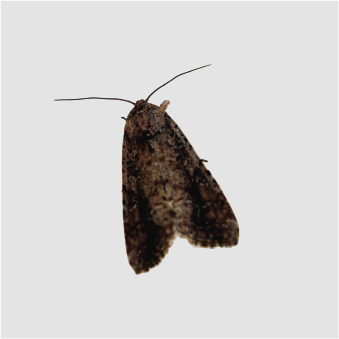
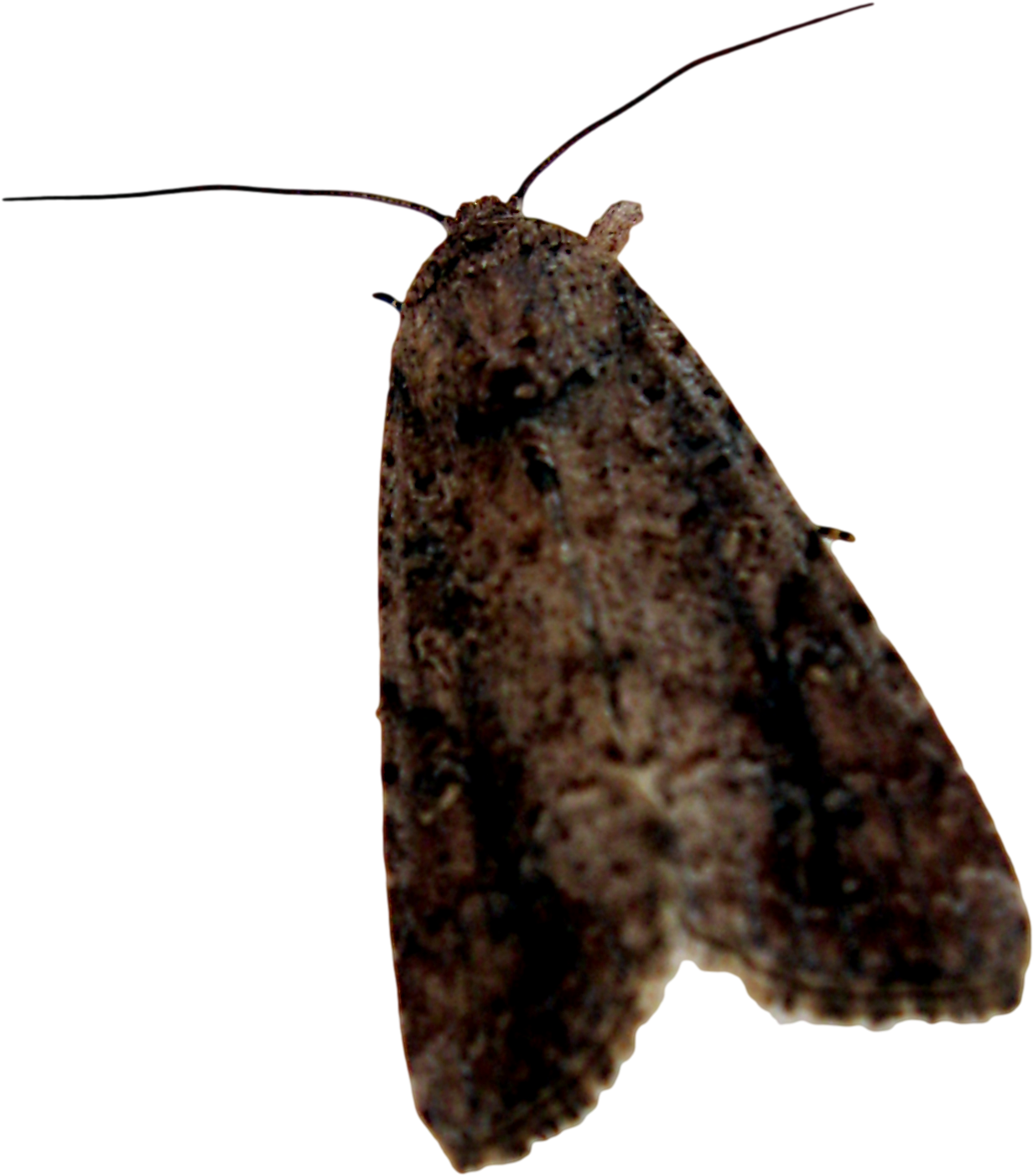 Moths
Moths
🪳 Cockroaches – Everything You Need to Know
Cockroaches are among the most common household pests worldwide. Known for their survival skills and adaptability, these insects have lived on Earth for over 300 million years. While they play a role in the ecosystem, cockroaches inside homes and businesses can cause serious health risks and require immediate pest control.
🔹 What Are Cockroaches?
Belong to the order Blattodea.
More than 4,600 species, but only around 30 species infest human environments.
Highly adaptable, thriving in warm, humid, and dark spaces.
👉 SEO Keywords: cockroach infestation, cockroach pest control, cockroaches in Bahrain
🔹 Physical Characteristics
Body shape: Flat, oval, reddish-brown or black.
Size: From a few millimeters to over 5 cm (American cockroach).
Legs: 6 strong spiny legs for fast running.
Antennae: Long and highly sensitive.
Wings: Some species fly, but most prefer crawling.
🔹 Life Cycle of Cockroaches
Cockroaches go through incomplete metamorphosis:
Eggs (Ootheca) – Protective case containing multiple eggs.
Nymphs – Small, wingless versions of adults.
Adults – Fully developed, capable of reproduction.
👉 A single female cockroach can produce hundreds of offspring, leading to rapid infestations.
🔹 Common Types of Cockroaches in Homes & Businesses
German Cockroach – Small, light brown with two stripes, the most common indoor species.
American Cockroach – Large, reddish-brown, often found in drains and basements.
Oriental Cockroach – Dark brown to black, prefers cool, damp areas.
Brown-Banded Cockroach – Small with light bands, often found in furniture and appliances.
Smoky-Brown Cockroach – Dark brown, prefers warm and humid conditions.
👉 SEO Keywords: German cockroach control, American cockroach treatment, cockroach removal services
🔹 Health Risks of Cockroaches
Cockroaches are more than just unpleasant pests – they are a serious health hazard:
Spread diseases like Salmonella, E. coli, and dysentery.
Trigger asthma and allergies (especially in children).
Contaminate food and surfaces with droppings and bacteria.
Produce foul odors that worsen infestations.
🔹 Signs of a Cockroach Infestation
Droppings (tiny black or brown specks).
Egg cases (oothecae) around cupboards and appliances.
Musty, unpleasant odor.
Shed skins or dead cockroaches.
Live cockroaches seen at night.
🔹 How to Prevent Cockroaches
Keep kitchens and storage areas clean and dry.
Seal cracks, holes, and entry points.
Store food in airtight containers.
Fix leaks (cockroaches need water to survive).
Dispose of garbage daily.
🔹 Professional Cockroach Control in Bahrain
DIY sprays may kill a few cockroaches, but infestations often return. For long-lasting results, professional pest control is essential.
At Buckkillers Cleaning Services W.L.L., we offer:
German cockroach treatments for homes, restaurants, and offices.
Safe insecticide applications approved by local health authorities.
Long-term pest management plans for both residential and commercial clients.
Expert technicians with over 18 years of pest control experience in Bahrain.
🔹 Fun Facts About Cockroaches
Cockroaches can live a week without their head.
Can survive without food for a month.
Can hold their breath for 40 minutes.
Have been around since before dinosaurs.
✅ In summary: Cockroaches are ancient survivors but also one of the most dangerous pests in Bahrain. If you see signs of infestation, contact Buckkillers Pest Control Bahrain for reliable and safe solutions.
Moths
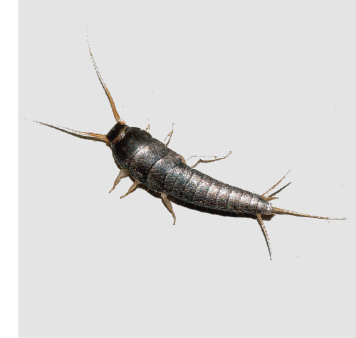
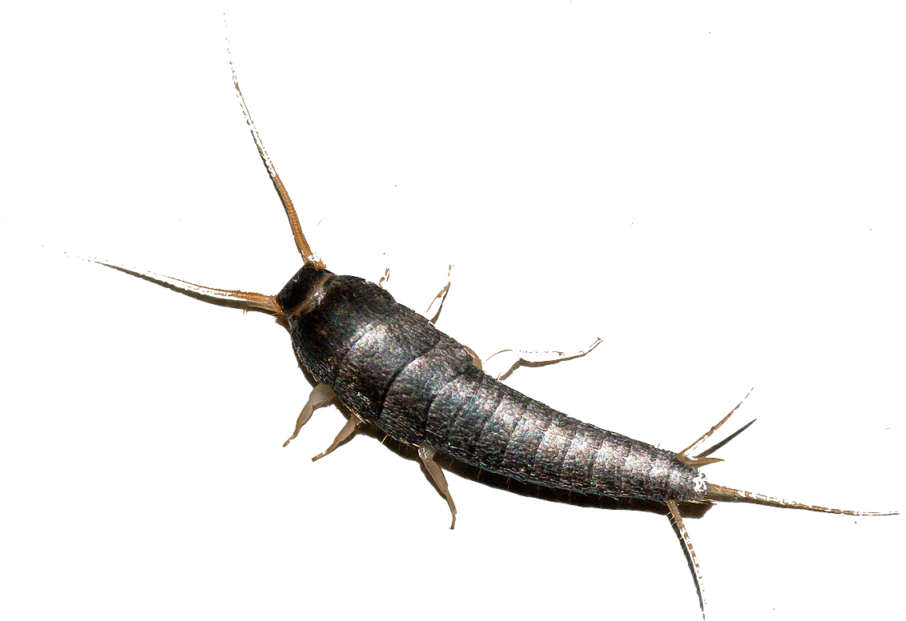 Silverfish
Silverfish
Spiders – Everything You Need to Know
Spiders belong to the class Arachnida and are often feared, but most species are harmless. They help control insect populations naturally. In Bahrain, some house spiders can be seen indoors, but only a few species pose health risks.
🔹 Physical Characteristics
8 legs (insects have 6).
2 body segments (cephalothorax & abdomen).
Usually 8 eyes, varying by species.
Fangs with venom to paralyze prey.
🔹 Behavior
Some build webs (orb-weavers, cobweb spiders).
Others actively hunt (wolf spiders, jumping spiders).
Generally shy and avoid humans.
🔹 Benefits of Spiders
Natural pest control (mosquitoes, flies, cockroaches).
🔹 Risks
Bites from certain species (Black Widow, Brown Recluse) can be harmful, though dangerous spiders are rare in Bahrain.
Silverfish
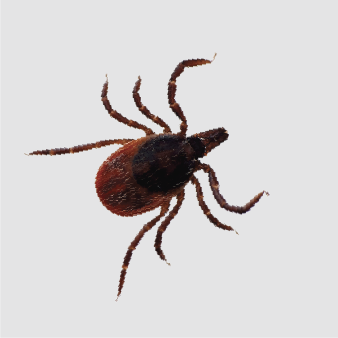
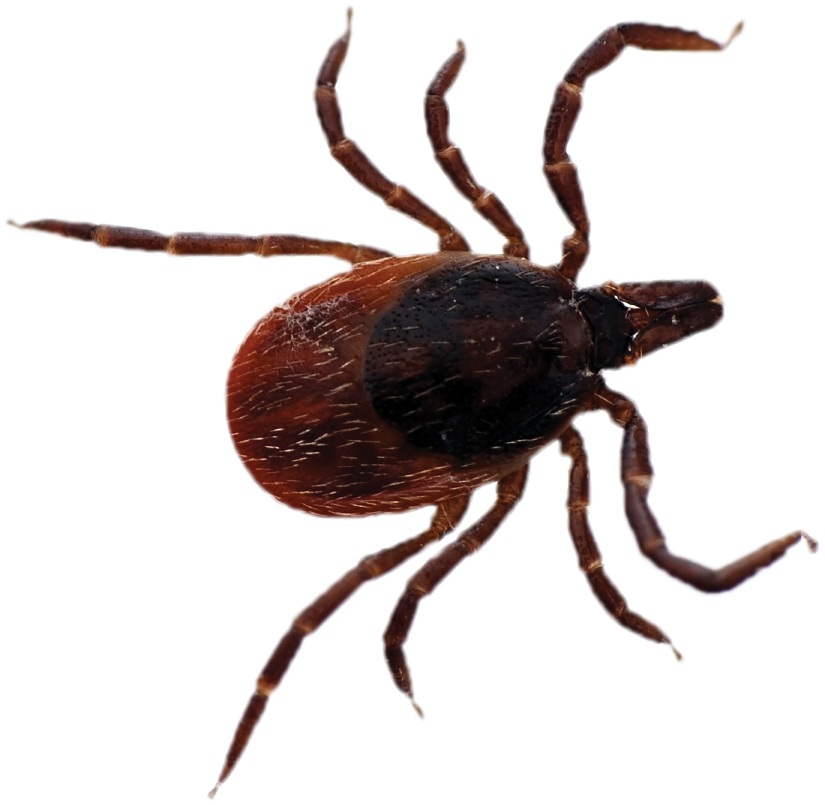 Ticks
Ticks
Description:
Tiny, flat insects that hide in beds, furniture, and cracks. They feed on human blood at night. Risks/Dangers: Cause itchy bites, allergic reactions, and sleepless nights.
 Signs of Infestation:
Signs of Infestation:
Small blood stains on sheets, itchy bites, visible bugs in mattress seams.
Prevention Tips:
Regularly inspect bedding, avoid second-hand furniture, wash fabrics in hot water.
 Buckkillers Solution:
Buckkillers Solution:
We use specialized heat and chemical treatments to completely remove bed bugs.
Bed bugs are small, blood-sucking pests that infest mattresses, furniture, and upholstery. They are a growing problem in Bahrain due to travel and shared housing.
🔹 Physical Characteristics
Small, oval, reddish-brown insects (4–6 mm).
Hide in cracks, mattresses, furniture seams.
Active mostly at night.
🔹 Signs of Infestation
Small, itchy bites on skin.
Blood stains on sheets.
Shed skins or tiny black spots (feces) near beds.
🔹 Risks
Cause itching, allergic reactions, and sleeplessness.
Spread quickly between apartments and hotels.
🔹 Control
Washing and heat-treating infested fabrics.
Professional pest control treatments required.
Tick
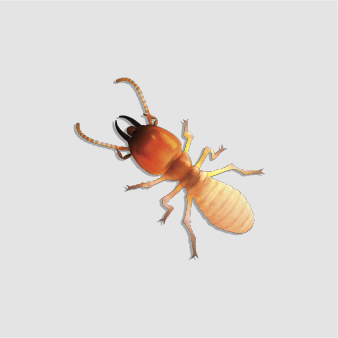
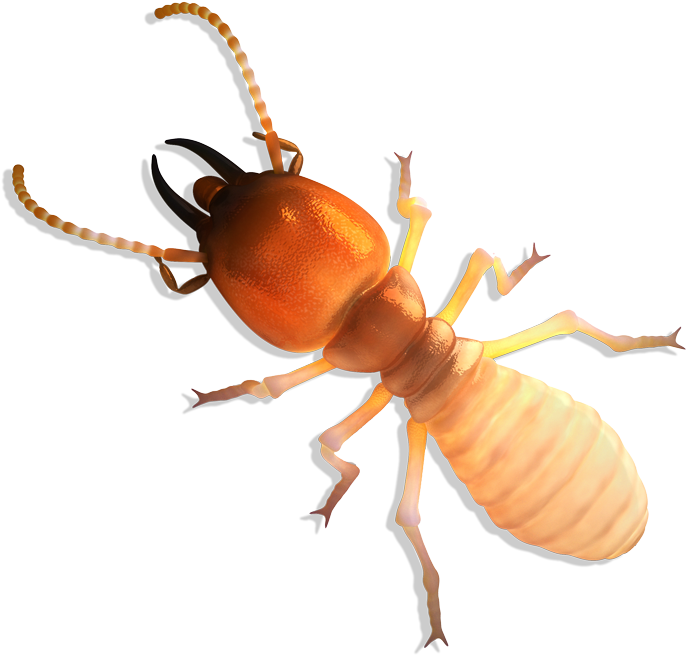 Termites
Termites
Ants are astonishingly diverse! There are over 12,000 known species of ants worldwide, and scientists estimate there could be up to 20,000 in total. These species are grouped into various types based on behavior, habitat, and physical traits.
Here are some of the most common and fascinating types:
 Fire Ant (Solenopsis spp.)
Fire Ant (Solenopsis spp.)
– Appearance: Reddish-brown, small but aggressive.
– Behavior: Known for painful stings that can cause allergic reactions.
– Habitat: Builds mounds in gardens, lawns, and near buildings.
– Risk: Their sting can be medically significant, especially for sensitive individuals.
 Black House Ant (Ochetellus spp.)
Black House Ant (Ochetellus spp.)
– Appearance: Shiny black, about 4 mm long.
– Behavior: Attracted to sugary substances; often invades homes during hot seasons.
– Habitat: Common in gardens, enters buildings through cracks and crevices.
– Risk: Can sting and release formic acid, triggering mild allergic reactions.
 Pharaoh Ant (Monomorium pharaonis)
Pharaoh Ant (Monomorium pharaonis)
– Appearance: Tiny, yellowish-red.
– Behavior: Builds multiple nests, making them hard to eliminate.
– Habitat: Frequently found in hospitals and homes, attracted to protein-rich food.
– Risk: Known to contaminate sterile environments and feed on blood and waste.
Black House Ant (Ochetellus spp.)
– Size: ~4 mm
– Color: Shiny black
– Habitat: Gardens, wall crevices, window frames
– Behavior:
– Attracted to sugary substances
– Enters buildings during hot seasons to escape heat
– Produces formic acid and may sting when disturbed
– Risks:
– Can trigger allergic reactions
– Contaminates food and surfaces
2. Carpenter Ant (Camponotus spp.)
– Size: Up to 1.2 cm — largest ant species in Bahrain
– Color: Black or reddish
– Habitat: Inside wood structures, especially moist or decaying wood
– Behavior:
– Does not eat wood like termites, but excavates it to build nests
– Can create satellite nests, making them hard to eliminate
– Risks:
– Structural damage to buildings
– Often mistaken for termite infestations
Crazy Ant (Paratrechina longicornis)
Crazy Ant
– Life Cycle: Egg → Larva → Pupa → Adult
– Habitat: Indoors and outdoors—wall voids, mulch, trash
– Food: Omnivorous—sweets, proteins, honeydew
– Behavior: Erratic movement, forms supercolonies, nests far from food
– Human Impact: Can damage electronics; hard to control
– Treatment: Use granular baits (abamectin, hydramethylnon), perimeter sprays (fipronil, bifenthrin)
🏠 3. Odorous House Ant (Tapinoma sessile)
Odorous House Ant
– Life Cycle: Egg → Larva → Pupa → Adult
– Habitat: Wall voids, near heaters, leaking pipes
– Food: Sweets, honeydew, household scraps
– Behavior: Emits rotten coconut smell when crushed; trails indoors
– Human Impact: Food contamination, nuisance in homes
– Treatment: Sugar-based gel baits, seal entry points, avoid sprays during baiting
👻 4. Ghost Ant (Tapinoma melanocephalum)
Ghost Ant
– Life Cycle: Egg → Larva → Pupa → Adult
– Habitat: Indoors—wall cracks, potted plants, bathrooms
– Food: Sugars, honeydew, dead insects
– Behavior: Translucent body; hard to spot; forms multiple nests
– Human Impact: Can contaminate food; difficult to detect
– Treatment: Use boric acid baits, monitor trails, treat multiple nest sites
🌾 5. Harvester Ant (Pogonomyrmex spp.)
Harvester Ant
– Life Cycle: Egg → Larva → Pupa → Adult
– Habitat: Dry, open areas; builds large mounds
– Food: Seeds, insects
– Behavior: Seed collectors; aerate soil; painful sting
– Human Impact: Can sting humans; beneficial for ecosystems
– Treatment: Dust insecticides into mound, perimeter sprays, avoid disturbing nests directly
Termites
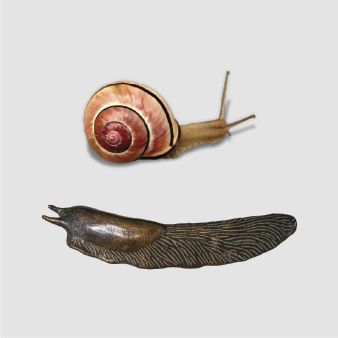
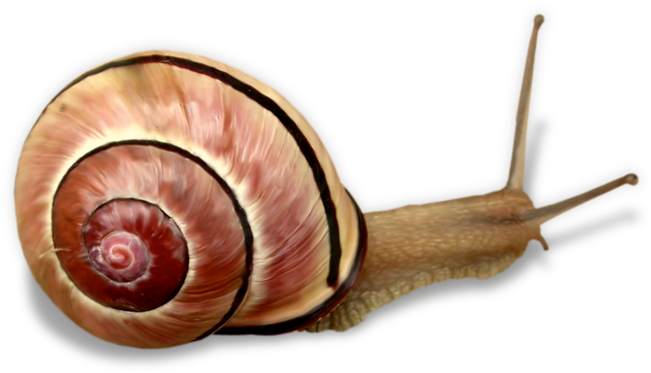 Snail & Slug
Snail & Slug
🪳 Cockroaches – Everything You Need to Know
Cockroaches are among the most common household pests worldwide. Known for their survival skills and adaptability, these insects have lived on Earth for over 300 million years. While they play a role in the ecosystem, cockroaches inside homes and businesses can cause serious health risks and require immediate pest control.
🔹 What Are Cockroaches?
Belong to the order Blattodea.
More than 4,600 species, but only around 30 species infest human environments.
Highly adaptable, thriving in warm, humid, and dark spaces.
👉 SEO Keywords: cockroach infestation, cockroach pest control, cockroaches in Bahrain
🔹 Physical Characteristics
Body shape: Flat, oval, reddish-brown or black.
Size: From a few millimeters to over 5 cm (American cockroach).
Legs: 6 strong spiny legs for fast running.
Antennae: Long and highly sensitive.
Wings: Some species fly, but most prefer crawling.
🔹 Life Cycle of Cockroaches
Cockroaches go through incomplete metamorphosis:
Eggs (Ootheca) – Protective case containing multiple eggs.
Nymphs – Small, wingless versions of adults.
Adults – Fully developed, capable of reproduction.
👉 A single female cockroach can produce hundreds of offspring, leading to rapid infestations.
🔹 Common Types of Cockroaches in Homes & Businesses
German Cockroach – Small, light brown with two stripes, the most common indoor species.
American Cockroach – Large, reddish-brown, often found in drains and basements.
Oriental Cockroach – Dark brown to black, prefers cool, damp areas.
Brown-Banded Cockroach – Small with light bands, often found in furniture and appliances.
Smoky-Brown Cockroach – Dark brown, prefers warm and humid conditions.
👉 SEO Keywords: German cockroach control, American cockroach treatment, cockroach removal services
🔹 Health Risks of Cockroaches
Cockroaches are more than just unpleasant pests – they are a serious health hazard:
Spread diseases like Salmonella, E. coli, and dysentery.
Trigger asthma and allergies (especially in children).
Contaminate food and surfaces with droppings and bacteria.
Produce foul odors that worsen infestations.
🔹 Signs of a Cockroach Infestation
Droppings (tiny black or brown specks).
Egg cases (oothecae) around cupboards and appliances.
Musty, unpleasant odor.
Shed skins or dead cockroaches.
Live cockroaches seen at night.
🔹 How to Prevent Cockroaches
Keep kitchens and storage areas clean and dry.
Seal cracks, holes, and entry points.
Store food in airtight containers.
Fix leaks (cockroaches need water to survive).
Dispose of garbage daily.
🔹 Professional Cockroach Control in Bahrain
DIY sprays may kill a few cockroaches, but infestations often return. For long-lasting results, professional pest control is essential.
At Buckkillers Cleaning Services W.L.L., we offer:
German cockroach treatments for homes, restaurants, and offices.
Safe insecticide applications approved by local health authorities.
Long-term pest management plans for both residential and commercial clients.
Expert technicians with over 18 years of pest control experience in Bahrain.
🔹 Fun Facts About Cockroaches
Cockroaches can live a week without their head.
Can survive without food for a month.
Can hold their breath for 40 minutes.
Have been around since before dinosaurs.
✅ In summary: Cockroaches are ancient survivors but also one of the most dangerous pests in Bahrain. If you see signs of infestation, contact Buckkillers Pest Control Bahrain for reliable and safe solutions.
Snail & Slug
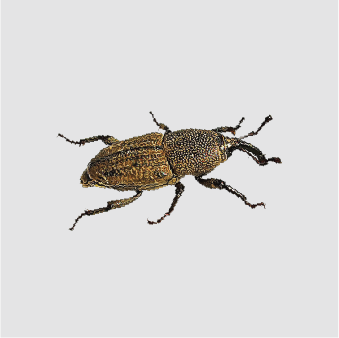
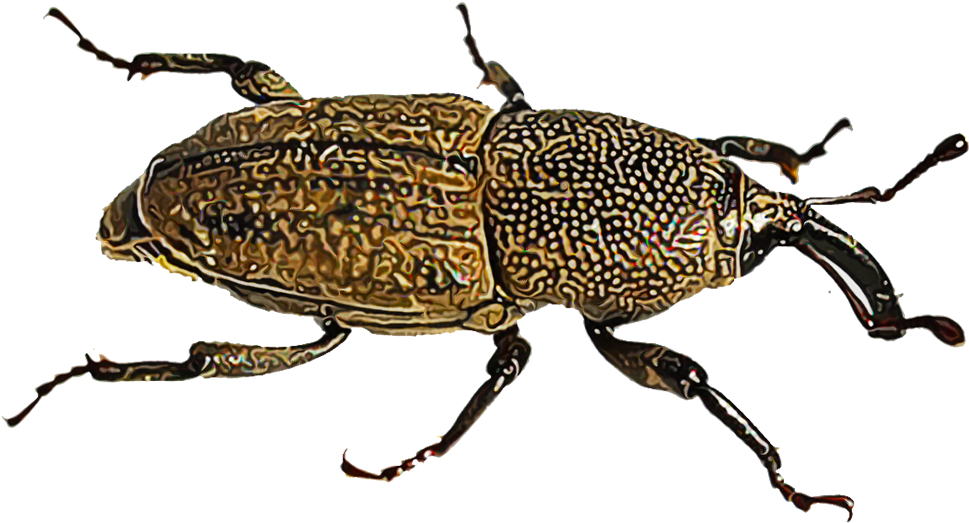 Weevil
Weevil
Spiders – Everything You Need to Know
Spiders belong to the class Arachnida and are often feared, but most species are harmless. They help control insect populations naturally. In Bahrain, some house spiders can be seen indoors, but only a few species pose health risks.
🔹 Physical Characteristics
8 legs (insects have 6).
2 body segments (cephalothorax & abdomen).
Usually 8 eyes, varying by species.
Fangs with venom to paralyze prey.
🔹 Behavior
Some build webs (orb-weavers, cobweb spiders).
Others actively hunt (wolf spiders, jumping spiders).
Generally shy and avoid humans.
🔹 Benefits of Spiders
Natural pest control (mosquitoes, flies, cockroaches).
🔹 Risks
Bites from certain species (Black Widow, Brown Recluse) can be harmful, though dangerous spiders are rare in Bahrain.
Weevil
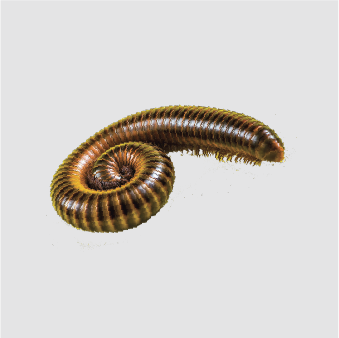
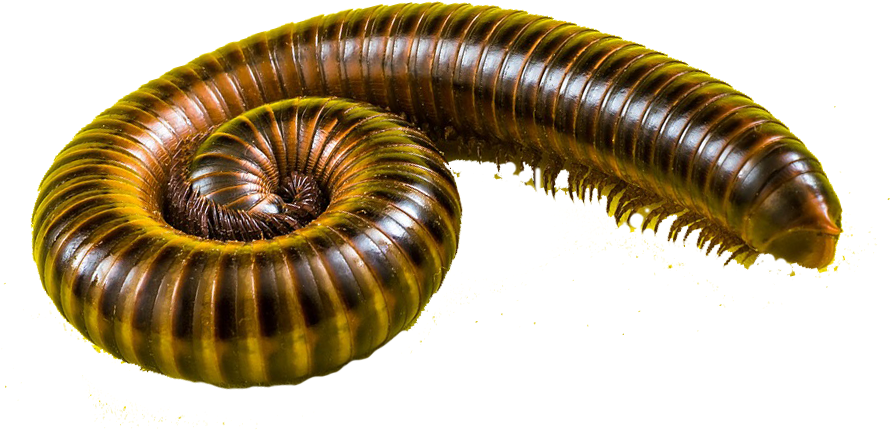 Millipedes
Millipedes
Description:
Tiny, flat insects that hide in beds, furniture, and cracks. They feed on human blood at night. Risks/Dangers: Cause itchy bites, allergic reactions, and sleepless nights.
 Signs of Infestation:
Signs of Infestation:
Small blood stains on sheets, itchy bites, visible bugs in mattress seams.
Prevention Tips:
Regularly inspect bedding, avoid second-hand furniture, wash fabrics in hot water.
 Buckkillers Solution:
Buckkillers Solution:
We use specialized heat and chemical treatments to completely remove bed bugs.
Bed bugs are small, blood-sucking pests that infest mattresses, furniture, and upholstery. They are a growing problem in Bahrain due to travel and shared housing.
🔹 Physical Characteristics
Small, oval, reddish-brown insects (4–6 mm).
Hide in cracks, mattresses, furniture seams.
Active mostly at night.
🔹 Signs of Infestation
Small, itchy bites on skin.
Blood stains on sheets.
Shed skins or tiny black spots (feces) near beds.
🔹 Risks
Cause itching, allergic reactions, and sleeplessness.
Spread quickly between apartments and hotels.
🔹 Control
Washing and heat-treating infested fabrics.
Professional pest control treatments required.
Millipedes
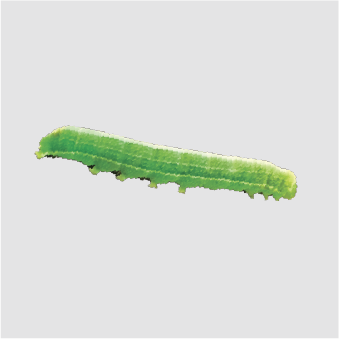
 Caterpillars
Caterpillars
Ants are astonishingly diverse! There are over 12,000 known species of ants worldwide, and scientists estimate there could be up to 20,000 in total. These species are grouped into various types based on behavior, habitat, and physical traits.
Here are some of the most common and fascinating types:
 Fire Ant (Solenopsis spp.)
Fire Ant (Solenopsis spp.)
– Appearance: Reddish-brown, small but aggressive.
– Behavior: Known for painful stings that can cause allergic reactions.
– Habitat: Builds mounds in gardens, lawns, and near buildings.
– Risk: Their sting can be medically significant, especially for sensitive individuals.
 Black House Ant (Ochetellus spp.)
Black House Ant (Ochetellus spp.)
– Appearance: Shiny black, about 4 mm long.
– Behavior: Attracted to sugary substances; often invades homes during hot seasons.
– Habitat: Common in gardens, enters buildings through cracks and crevices.
– Risk: Can sting and release formic acid, triggering mild allergic reactions.
 Pharaoh Ant (Monomorium pharaonis)
Pharaoh Ant (Monomorium pharaonis)
– Appearance: Tiny, yellowish-red.
– Behavior: Builds multiple nests, making them hard to eliminate.
– Habitat: Frequently found in hospitals and homes, attracted to protein-rich food.
– Risk: Known to contaminate sterile environments and feed on blood and waste.
Black House Ant (Ochetellus spp.)
– Size: ~4 mm
– Color: Shiny black
– Habitat: Gardens, wall crevices, window frames
– Behavior:
– Attracted to sugary substances
– Enters buildings during hot seasons to escape heat
– Produces formic acid and may sting when disturbed
– Risks:
– Can trigger allergic reactions
– Contaminates food and surfaces
2. Carpenter Ant (Camponotus spp.)
– Size: Up to 1.2 cm — largest ant species in Bahrain
– Color: Black or reddish
– Habitat: Inside wood structures, especially moist or decaying wood
– Behavior:
– Does not eat wood like termites, but excavates it to build nests
– Can create satellite nests, making them hard to eliminate
– Risks:
– Structural damage to buildings
– Often mistaken for termite infestations
Crazy Ant (Paratrechina longicornis)
Crazy Ant
– Life Cycle: Egg → Larva → Pupa → Adult
– Habitat: Indoors and outdoors—wall voids, mulch, trash
– Food: Omnivorous—sweets, proteins, honeydew
– Behavior: Erratic movement, forms supercolonies, nests far from food
– Human Impact: Can damage electronics; hard to control
– Treatment: Use granular baits (abamectin, hydramethylnon), perimeter sprays (fipronil, bifenthrin)
🏠 3. Odorous House Ant (Tapinoma sessile)
Odorous House Ant
– Life Cycle: Egg → Larva → Pupa → Adult
– Habitat: Wall voids, near heaters, leaking pipes
– Food: Sweets, honeydew, household scraps
– Behavior: Emits rotten coconut smell when crushed; trails indoors
– Human Impact: Food contamination, nuisance in homes
– Treatment: Sugar-based gel baits, seal entry points, avoid sprays during baiting
👻 4. Ghost Ant (Tapinoma melanocephalum)
Ghost Ant
– Life Cycle: Egg → Larva → Pupa → Adult
– Habitat: Indoors—wall cracks, potted plants, bathrooms
– Food: Sugars, honeydew, dead insects
– Behavior: Translucent body; hard to spot; forms multiple nests
– Human Impact: Can contaminate food; difficult to detect
– Treatment: Use boric acid baits, monitor trails, treat multiple nest sites
🌾 5. Harvester Ant (Pogonomyrmex spp.)
Harvester Ant
– Life Cycle: Egg → Larva → Pupa → Adult
– Habitat: Dry, open areas; builds large mounds
– Food: Seeds, insects
– Behavior: Seed collectors; aerate soil; painful sting
– Human Impact: Can sting humans; beneficial for ecosystems
– Treatment: Dust insecticides into mound, perimeter sprays, avoid disturbing nests directly
Caterpillars
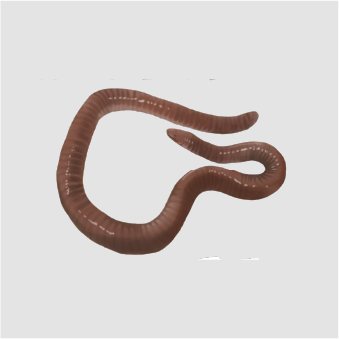
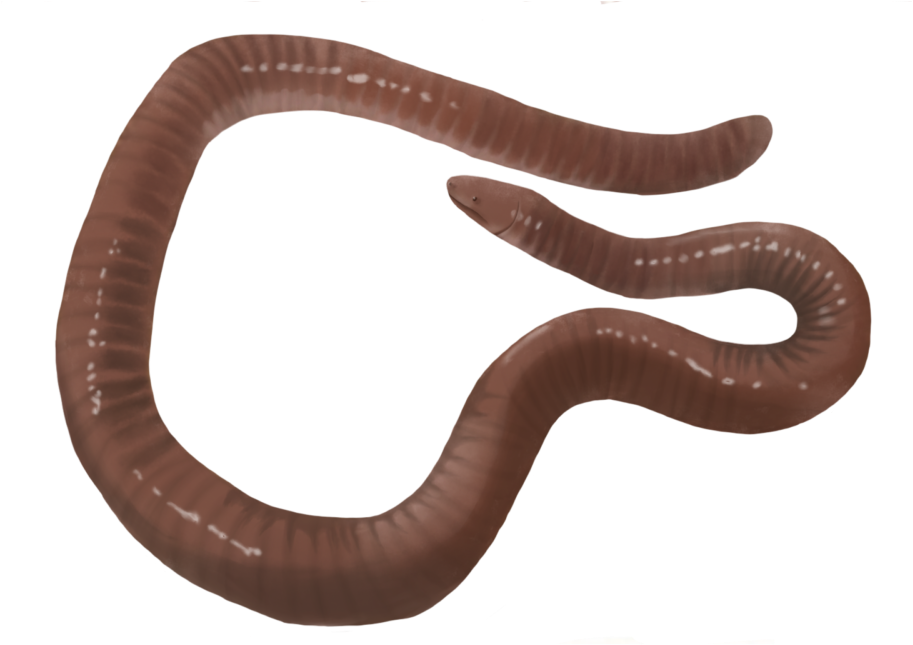 Earthworms
Earthworms
🪳 Cockroaches – Everything You Need to Know
Cockroaches are among the most common household pests worldwide. Known for their survival skills and adaptability, these insects have lived on Earth for over 300 million years. While they play a role in the ecosystem, cockroaches inside homes and businesses can cause serious health risks and require immediate pest control.
🔹 What Are Cockroaches?
Belong to the order Blattodea.
More than 4,600 species, but only around 30 species infest human environments.
Highly adaptable, thriving in warm, humid, and dark spaces.
👉 SEO Keywords: cockroach infestation, cockroach pest control, cockroaches in Bahrain
🔹 Physical Characteristics
Body shape: Flat, oval, reddish-brown or black.
Size: From a few millimeters to over 5 cm (American cockroach).
Legs: 6 strong spiny legs for fast running.
Antennae: Long and highly sensitive.
Wings: Some species fly, but most prefer crawling.
🔹 Life Cycle of Cockroaches
Cockroaches go through incomplete metamorphosis:
Eggs (Ootheca) – Protective case containing multiple eggs.
Nymphs – Small, wingless versions of adults.
Adults – Fully developed, capable of reproduction.
👉 A single female cockroach can produce hundreds of offspring, leading to rapid infestations.
🔹 Common Types of Cockroaches in Homes & Businesses
German Cockroach – Small, light brown with two stripes, the most common indoor species.
American Cockroach – Large, reddish-brown, often found in drains and basements.
Oriental Cockroach – Dark brown to black, prefers cool, damp areas.
Brown-Banded Cockroach – Small with light bands, often found in furniture and appliances.
Smoky-Brown Cockroach – Dark brown, prefers warm and humid conditions.
👉 SEO Keywords: German cockroach control, American cockroach treatment, cockroach removal services
🔹 Health Risks of Cockroaches
Cockroaches are more than just unpleasant pests – they are a serious health hazard:
Spread diseases like Salmonella, E. coli, and dysentery.
Trigger asthma and allergies (especially in children).
Contaminate food and surfaces with droppings and bacteria.
Produce foul odors that worsen infestations.
🔹 Signs of a Cockroach Infestation
Droppings (tiny black or brown specks).
Egg cases (oothecae) around cupboards and appliances.
Musty, unpleasant odor.
Shed skins or dead cockroaches.
Live cockroaches seen at night.
🔹 How to Prevent Cockroaches
Keep kitchens and storage areas clean and dry.
Seal cracks, holes, and entry points.
Store food in airtight containers.
Fix leaks (cockroaches need water to survive).
Dispose of garbage daily.
🔹 Professional Cockroach Control in Bahrain
DIY sprays may kill a few cockroaches, but infestations often return. For long-lasting results, professional pest control is essential.
At Buckkillers Cleaning Services W.L.L., we offer:
German cockroach treatments for homes, restaurants, and offices.
Safe insecticide applications approved by local health authorities.
Long-term pest management plans for both residential and commercial clients.
Expert technicians with over 18 years of pest control experience in Bahrain.
🔹 Fun Facts About Cockroaches
Cockroaches can live a week without their head.
Can survive without food for a month.
Can hold their breath for 40 minutes.
Have been around since before dinosaurs.
✅ In summary: Cockroaches are ancient survivors but also one of the most dangerous pests in Bahrain. If you see signs of infestation, contact Buckkillers Pest Control Bahrain for reliable and safe solutions.
Earthworms
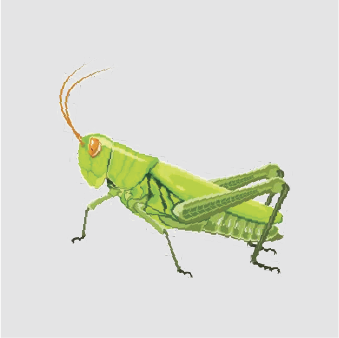
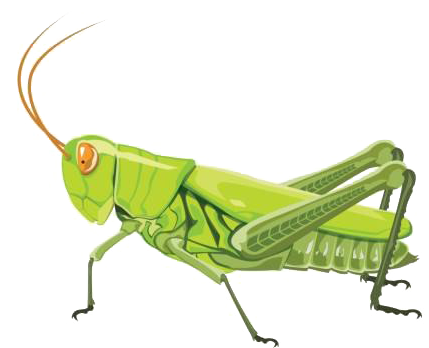 Grasshoppers
Grasshoppers
Spiders – Everything You Need to Know
Spiders belong to the class Arachnida and are often feared, but most species are harmless. They help control insect populations naturally. In Bahrain, some house spiders can be seen indoors, but only a few species pose health risks.
🔹 Physical Characteristics
8 legs (insects have 6).
2 body segments (cephalothorax & abdomen).
Usually 8 eyes, varying by species.
Fangs with venom to paralyze prey.
🔹 Behavior
Some build webs (orb-weavers, cobweb spiders).
Others actively hunt (wolf spiders, jumping spiders).
Generally shy and avoid humans.
🔹 Benefits of Spiders
Natural pest control (mosquitoes, flies, cockroaches).
🔹 Risks
Bites from certain species (Black Widow, Brown Recluse) can be harmful, though dangerous spiders are rare in Bahrain.
Grasshoppers
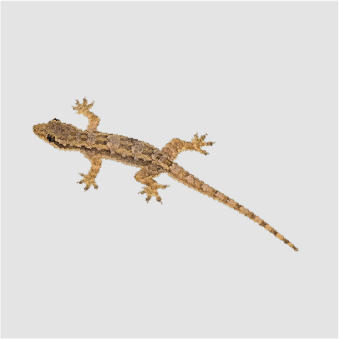
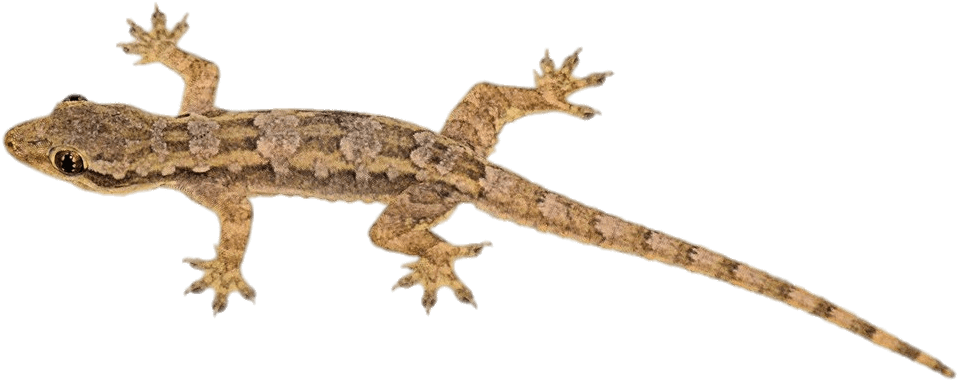 LIZARDS
LIZARDS
Description:
Tiny, flat insects that hide in beds, furniture, and cracks. They feed on human blood at night. Risks/Dangers: Cause itchy bites, allergic reactions, and sleepless nights.
 Signs of Infestation:
Signs of Infestation:
Small blood stains on sheets, itchy bites, visible bugs in mattress seams.
Prevention Tips:
Regularly inspect bedding, avoid second-hand furniture, wash fabrics in hot water.
 Buckkillers Solution:
Buckkillers Solution:
We use specialized heat and chemical treatments to completely remove bed bugs.
Bed bugs are small, blood-sucking pests that infest mattresses, furniture, and upholstery. They are a growing problem in Bahrain due to travel and shared housing.
🔹 Physical Characteristics
Small, oval, reddish-brown insects (4–6 mm).
Hide in cracks, mattresses, furniture seams.
Active mostly at night.
🔹 Signs of Infestation
Small, itchy bites on skin.
Blood stains on sheets.
Shed skins or tiny black spots (feces) near beds.
🔹 Risks
Cause itching, allergic reactions, and sleeplessness.
Spread quickly between apartments and hotels.
🔹 Control
Washing and heat-treating infested fabrics.
Professional pest control treatments required.
Lizards
flying Insect

 Caterpillars
Caterpillars
Ants are astonishingly diverse! There are over 12,000 known species of ants worldwide, and scientists estimate there could be up to 20,000 in total. These species are grouped into various types based on behavior, habitat, and physical traits.
Here are some of the most common and fascinating types:
 Fire Ant (Solenopsis spp.)
Fire Ant (Solenopsis spp.)
– Appearance: Reddish-brown, small but aggressive.
– Behavior: Known for painful stings that can cause allergic reactions.
– Habitat: Builds mounds in gardens, lawns, and near buildings.
– Risk: Their sting can be medically significant, especially for sensitive individuals.
 Black House Ant (Ochetellus spp.)
Black House Ant (Ochetellus spp.)
– Appearance: Shiny black, about 4 mm long.
– Behavior: Attracted to sugary substances; often invades homes during hot seasons.
– Habitat: Common in gardens, enters buildings through cracks and crevices.
– Risk: Can sting and release formic acid, triggering mild allergic reactions.
 Pharaoh Ant (Monomorium pharaonis)
Pharaoh Ant (Monomorium pharaonis)
– Appearance: Tiny, yellowish-red.
– Behavior: Builds multiple nests, making them hard to eliminate.
– Habitat: Frequently found in hospitals and homes, attracted to protein-rich food.
– Risk: Known to contaminate sterile environments and feed on blood and waste.
Black House Ant (Ochetellus spp.)
– Size: ~4 mm
– Color: Shiny black
– Habitat: Gardens, wall crevices, window frames
– Behavior:
– Attracted to sugary substances
– Enters buildings during hot seasons to escape heat
– Produces formic acid and may sting when disturbed
– Risks:
– Can trigger allergic reactions
– Contaminates food and surfaces
2. Carpenter Ant (Camponotus spp.)
– Size: Up to 1.2 cm — largest ant species in Bahrain
– Color: Black or reddish
– Habitat: Inside wood structures, especially moist or decaying wood
– Behavior:
– Does not eat wood like termites, but excavates it to build nests
– Can create satellite nests, making them hard to eliminate
– Risks:
– Structural damage to buildings
– Often mistaken for termite infestations
Crazy Ant (Paratrechina longicornis)
Crazy Ant
– Life Cycle: Egg → Larva → Pupa → Adult
– Habitat: Indoors and outdoors—wall voids, mulch, trash
– Food: Omnivorous—sweets, proteins, honeydew
– Behavior: Erratic movement, forms supercolonies, nests far from food
– Human Impact: Can damage electronics; hard to control
– Treatment: Use granular baits (abamectin, hydramethylnon), perimeter sprays (fipronil, bifenthrin)
🏠 3. Odorous House Ant (Tapinoma sessile)
Odorous House Ant
– Life Cycle: Egg → Larva → Pupa → Adult
– Habitat: Wall voids, near heaters, leaking pipes
– Food: Sweets, honeydew, household scraps
– Behavior: Emits rotten coconut smell when crushed; trails indoors
– Human Impact: Food contamination, nuisance in homes
– Treatment: Sugar-based gel baits, seal entry points, avoid sprays during baiting
👻 4. Ghost Ant (Tapinoma melanocephalum)
Ghost Ant
– Life Cycle: Egg → Larva → Pupa → Adult
– Habitat: Indoors—wall cracks, potted plants, bathrooms
– Food: Sugars, honeydew, dead insects
– Behavior: Translucent body; hard to spot; forms multiple nests
– Human Impact: Can contaminate food; difficult to detect
– Treatment: Use boric acid baits, monitor trails, treat multiple nest sites
🌾 5. Harvester Ant (Pogonomyrmex spp.)
Harvester Ant
– Life Cycle: Egg → Larva → Pupa → Adult
– Habitat: Dry, open areas; builds large mounds
– Food: Seeds, insects
– Behavior: Seed collectors; aerate soil; painful sting
– Human Impact: Can sting humans; beneficial for ecosystems
– Treatment: Dust insecticides into mound, perimeter sprays, avoid disturbing nests directly
HOUSE FLIES

 Earthworms
Earthworms
🪳 Cockroaches – Everything You Need to Know
Cockroaches are among the most common household pests worldwide. Known for their survival skills and adaptability, these insects have lived on Earth for over 300 million years. While they play a role in the ecosystem, cockroaches inside homes and businesses can cause serious health risks and require immediate pest control.
🔹 What Are Cockroaches?
Belong to the order Blattodea.
More than 4,600 species, but only around 30 species infest human environments.
Highly adaptable, thriving in warm, humid, and dark spaces.
👉 SEO Keywords: cockroach infestation, cockroach pest control, cockroaches in Bahrain
🔹 Physical Characteristics
Body shape: Flat, oval, reddish-brown or black.
Size: From a few millimeters to over 5 cm (American cockroach).
Legs: 6 strong spiny legs for fast running.
Antennae: Long and highly sensitive.
Wings: Some species fly, but most prefer crawling.
🔹 Life Cycle of Cockroaches
Cockroaches go through incomplete metamorphosis:
Eggs (Ootheca) – Protective case containing multiple eggs.
Nymphs – Small, wingless versions of adults.
Adults – Fully developed, capable of reproduction.
👉 A single female cockroach can produce hundreds of offspring, leading to rapid infestations.
🔹 Common Types of Cockroaches in Homes & Businesses
German Cockroach – Small, light brown with two stripes, the most common indoor species.
American Cockroach – Large, reddish-brown, often found in drains and basements.
Oriental Cockroach – Dark brown to black, prefers cool, damp areas.
Brown-Banded Cockroach – Small with light bands, often found in furniture and appliances.
Smoky-Brown Cockroach – Dark brown, prefers warm and humid conditions.
👉 SEO Keywords: German cockroach control, American cockroach treatment, cockroach removal services
🔹 Health Risks of Cockroaches
Cockroaches are more than just unpleasant pests – they are a serious health hazard:
Spread diseases like Salmonella, E. coli, and dysentery.
Trigger asthma and allergies (especially in children).
Contaminate food and surfaces with droppings and bacteria.
Produce foul odors that worsen infestations.
🔹 Signs of a Cockroach Infestation
Droppings (tiny black or brown specks).
Egg cases (oothecae) around cupboards and appliances.
Musty, unpleasant odor.
Shed skins or dead cockroaches.
Live cockroaches seen at night.
🔹 How to Prevent Cockroaches
Keep kitchens and storage areas clean and dry.
Seal cracks, holes, and entry points.
Store food in airtight containers.
Fix leaks (cockroaches need water to survive).
Dispose of garbage daily.
🔹 Professional Cockroach Control in Bahrain
DIY sprays may kill a few cockroaches, but infestations often return. For long-lasting results, professional pest control is essential.
At Buckkillers Cleaning Services W.L.L., we offer:
German cockroach treatments for homes, restaurants, and offices.
Safe insecticide applications approved by local health authorities.
Long-term pest management plans for both residential and commercial clients.
Expert technicians with over 18 years of pest control experience in Bahrain.
🔹 Fun Facts About Cockroaches
Cockroaches can live a week without their head.
Can survive without food for a month.
Can hold their breath for 40 minutes.
Have been around since before dinosaurs.
✅ In summary: Cockroaches are ancient survivors but also one of the most dangerous pests in Bahrain. If you see signs of infestation, contact Buckkillers Pest Control Bahrain for reliable and safe solutions.
MOSQUITO

 Grasshoppers
Grasshoppers
Spiders – Everything You Need to Know
Spiders belong to the class Arachnida and are often feared, but most species are harmless. They help control insect populations naturally. In Bahrain, some house spiders can be seen indoors, but only a few species pose health risks.
🔹 Physical Characteristics
8 legs (insects have 6).
2 body segments (cephalothorax & abdomen).
Usually 8 eyes, varying by species.
Fangs with venom to paralyze prey.
🔹 Behavior
Some build webs (orb-weavers, cobweb spiders).
Others actively hunt (wolf spiders, jumping spiders).
Generally shy and avoid humans.
🔹 Benefits of Spiders
Natural pest control (mosquitoes, flies, cockroaches).
🔹 Risks
Bites from certain species (Black Widow, Brown Recluse) can be harmful, though dangerous spiders are rare in Bahrain.
DRAIN FLIES

 LIZARDS
LIZARDS
Description:
Tiny, flat insects that hide in beds, furniture, and cracks. They feed on human blood at night. Risks/Dangers: Cause itchy bites, allergic reactions, and sleepless nights.
 Signs of Infestation:
Signs of Infestation:
Small blood stains on sheets, itchy bites, visible bugs in mattress seams.
Prevention Tips:
Regularly inspect bedding, avoid second-hand furniture, wash fabrics in hot water.
 Buckkillers Solution:
Buckkillers Solution:
We use specialized heat and chemical treatments to completely remove bed bugs.
Bed bugs are small, blood-sucking pests that infest mattresses, furniture, and upholstery. They are a growing problem in Bahrain due to travel and shared housing.
🔹 Physical Characteristics
Small, oval, reddish-brown insects (4–6 mm).
Hide in cracks, mattresses, furniture seams.
Active mostly at night.
🔹 Signs of Infestation
Small, itchy bites on skin.
Blood stains on sheets.
Shed skins or tiny black spots (feces) near beds.
🔹 Risks
Cause itching, allergic reactions, and sleeplessness.
Spread quickly between apartments and hotels.
🔹 Control
Washing and heat-treating infested fabrics.
Professional pest control treatments required.
FRUIT FLIES

 Caterpillars
Caterpillars
Ants are astonishingly diverse! There are over 12,000 known species of ants worldwide, and scientists estimate there could be up to 20,000 in total. These species are grouped into various types based on behavior, habitat, and physical traits.
Here are some of the most common and fascinating types:
 Fire Ant (Solenopsis spp.)
Fire Ant (Solenopsis spp.)
– Appearance: Reddish-brown, small but aggressive.
– Behavior: Known for painful stings that can cause allergic reactions.
– Habitat: Builds mounds in gardens, lawns, and near buildings.
– Risk: Their sting can be medically significant, especially for sensitive individuals.
 Black House Ant (Ochetellus spp.)
Black House Ant (Ochetellus spp.)
– Appearance: Shiny black, about 4 mm long.
– Behavior: Attracted to sugary substances; often invades homes during hot seasons.
– Habitat: Common in gardens, enters buildings through cracks and crevices.
– Risk: Can sting and release formic acid, triggering mild allergic reactions.
 Pharaoh Ant (Monomorium pharaonis)
Pharaoh Ant (Monomorium pharaonis)
– Appearance: Tiny, yellowish-red.
– Behavior: Builds multiple nests, making them hard to eliminate.
– Habitat: Frequently found in hospitals and homes, attracted to protein-rich food.
– Risk: Known to contaminate sterile environments and feed on blood and waste.
Black House Ant (Ochetellus spp.)
– Size: ~4 mm
– Color: Shiny black
– Habitat: Gardens, wall crevices, window frames
– Behavior:
– Attracted to sugary substances
– Enters buildings during hot seasons to escape heat
– Produces formic acid and may sting when disturbed
– Risks:
– Can trigger allergic reactions
– Contaminates food and surfaces
2. Carpenter Ant (Camponotus spp.)
– Size: Up to 1.2 cm — largest ant species in Bahrain
– Color: Black or reddish
– Habitat: Inside wood structures, especially moist or decaying wood
– Behavior:
– Does not eat wood like termites, but excavates it to build nests
– Can create satellite nests, making them hard to eliminate
– Risks:
– Structural damage to buildings
– Often mistaken for termite infestations
Crazy Ant (Paratrechina longicornis)
Crazy Ant
– Life Cycle: Egg → Larva → Pupa → Adult
– Habitat: Indoors and outdoors—wall voids, mulch, trash
– Food: Omnivorous—sweets, proteins, honeydew
– Behavior: Erratic movement, forms supercolonies, nests far from food
– Human Impact: Can damage electronics; hard to control
– Treatment: Use granular baits (abamectin, hydramethylnon), perimeter sprays (fipronil, bifenthrin)
🏠 3. Odorous House Ant (Tapinoma sessile)
Odorous House Ant
– Life Cycle: Egg → Larva → Pupa → Adult
– Habitat: Wall voids, near heaters, leaking pipes
– Food: Sweets, honeydew, household scraps
– Behavior: Emits rotten coconut smell when crushed; trails indoors
– Human Impact: Food contamination, nuisance in homes
– Treatment: Sugar-based gel baits, seal entry points, avoid sprays during baiting
👻 4. Ghost Ant (Tapinoma melanocephalum)
Ghost Ant
– Life Cycle: Egg → Larva → Pupa → Adult
– Habitat: Indoors—wall cracks, potted plants, bathrooms
– Food: Sugars, honeydew, dead insects
– Behavior: Translucent body; hard to spot; forms multiple nests
– Human Impact: Can contaminate food; difficult to detect
– Treatment: Use boric acid baits, monitor trails, treat multiple nest sites
🌾 5. Harvester Ant (Pogonomyrmex spp.)
Harvester Ant
– Life Cycle: Egg → Larva → Pupa → Adult
– Habitat: Dry, open areas; builds large mounds
– Food: Seeds, insects
– Behavior: Seed collectors; aerate soil; painful sting
– Human Impact: Can sting humans; beneficial for ecosystems
– Treatment: Dust insecticides into mound, perimeter sprays, avoid disturbing nests directly
CRANE FLY

 Earthworms
Earthworms
🪳 Cockroaches – Everything You Need to Know
Cockroaches are among the most common household pests worldwide. Known for their survival skills and adaptability, these insects have lived on Earth for over 300 million years. While they play a role in the ecosystem, cockroaches inside homes and businesses can cause serious health risks and require immediate pest control.
🔹 What Are Cockroaches?
Belong to the order Blattodea.
More than 4,600 species, but only around 30 species infest human environments.
Highly adaptable, thriving in warm, humid, and dark spaces.
👉 SEO Keywords: cockroach infestation, cockroach pest control, cockroaches in Bahrain
🔹 Physical Characteristics
Body shape: Flat, oval, reddish-brown or black.
Size: From a few millimeters to over 5 cm (American cockroach).
Legs: 6 strong spiny legs for fast running.
Antennae: Long and highly sensitive.
Wings: Some species fly, but most prefer crawling.
🔹 Life Cycle of Cockroaches
Cockroaches go through incomplete metamorphosis:
Eggs (Ootheca) – Protective case containing multiple eggs.
Nymphs – Small, wingless versions of adults.
Adults – Fully developed, capable of reproduction.
👉 A single female cockroach can produce hundreds of offspring, leading to rapid infestations.
🔹 Common Types of Cockroaches in Homes & Businesses
German Cockroach – Small, light brown with two stripes, the most common indoor species.
American Cockroach – Large, reddish-brown, often found in drains and basements.
Oriental Cockroach – Dark brown to black, prefers cool, damp areas.
Brown-Banded Cockroach – Small with light bands, often found in furniture and appliances.
Smoky-Brown Cockroach – Dark brown, prefers warm and humid conditions.
👉 SEO Keywords: German cockroach control, American cockroach treatment, cockroach removal services
🔹 Health Risks of Cockroaches
Cockroaches are more than just unpleasant pests – they are a serious health hazard:
Spread diseases like Salmonella, E. coli, and dysentery.
Trigger asthma and allergies (especially in children).
Contaminate food and surfaces with droppings and bacteria.
Produce foul odors that worsen infestations.
🔹 Signs of a Cockroach Infestation
Droppings (tiny black or brown specks).
Egg cases (oothecae) around cupboards and appliances.
Musty, unpleasant odor.
Shed skins or dead cockroaches.
Live cockroaches seen at night.
🔹 How to Prevent Cockroaches
Keep kitchens and storage areas clean and dry.
Seal cracks, holes, and entry points.
Store food in airtight containers.
Fix leaks (cockroaches need water to survive).
Dispose of garbage daily.
🔹 Professional Cockroach Control in Bahrain
DIY sprays may kill a few cockroaches, but infestations often return. For long-lasting results, professional pest control is essential.
At Buckkillers Cleaning Services W.L.L., we offer:
German cockroach treatments for homes, restaurants, and offices.
Safe insecticide applications approved by local health authorities.
Long-term pest management plans for both residential and commercial clients.
Expert technicians with over 18 years of pest control experience in Bahrain.
🔹 Fun Facts About Cockroaches
Cockroaches can live a week without their head.
Can survive without food for a month.
Can hold their breath for 40 minutes.
Have been around since before dinosaurs.
✅ In summary: Cockroaches are ancient survivors but also one of the most dangerous pests in Bahrain. If you see signs of infestation, contact Buckkillers Pest Control Bahrain for reliable and safe solutions.
DRAGON FLY

 Grasshoppers
Grasshoppers
Spiders – Everything You Need to Know
Spiders belong to the class Arachnida and are often feared, but most species are harmless. They help control insect populations naturally. In Bahrain, some house spiders can be seen indoors, but only a few species pose health risks.
🔹 Physical Characteristics
8 legs (insects have 6).
2 body segments (cephalothorax & abdomen).
Usually 8 eyes, varying by species.
Fangs with venom to paralyze prey.
🔹 Behavior
Some build webs (orb-weavers, cobweb spiders).
Others actively hunt (wolf spiders, jumping spiders).
Generally shy and avoid humans.
🔹 Benefits of Spiders
Natural pest control (mosquitoes, flies, cockroaches).
🔹 Risks
Bites from certain species (Black Widow, Brown Recluse) can be harmful, though dangerous spiders are rare in Bahrain.
BEE

 LIZARDS
LIZARDS
Description:
Tiny, flat insects that hide in beds, furniture, and cracks. They feed on human blood at night. Risks/Dangers: Cause itchy bites, allergic reactions, and sleepless nights.
 Signs of Infestation:
Signs of Infestation:
Small blood stains on sheets, itchy bites, visible bugs in mattress seams.
Prevention Tips:
Regularly inspect bedding, avoid second-hand furniture, wash fabrics in hot water.
 Buckkillers Solution:
Buckkillers Solution:
We use specialized heat and chemical treatments to completely remove bed bugs.
Bed bugs are small, blood-sucking pests that infest mattresses, furniture, and upholstery. They are a growing problem in Bahrain due to travel and shared housing.
🔹 Physical Characteristics
Small, oval, reddish-brown insects (4–6 mm).
Hide in cracks, mattresses, furniture seams.
Active mostly at night.
🔹 Signs of Infestation
Small, itchy bites on skin.
Blood stains on sheets.
Shed skins or tiny black spots (feces) near beds.
🔹 Risks
Cause itching, allergic reactions, and sleeplessness.
Spread quickly between apartments and hotels.
🔹 Control
Washing and heat-treating infested fabrics.
Professional pest control treatments required.
BUTTERFLY

 Caterpillars
Caterpillars
Ants are astonishingly diverse! There are over 12,000 known species of ants worldwide, and scientists estimate there could be up to 20,000 in total. These species are grouped into various types based on behavior, habitat, and physical traits.
Here are some of the most common and fascinating types:
 Fire Ant (Solenopsis spp.)
Fire Ant (Solenopsis spp.)
– Appearance: Reddish-brown, small but aggressive.
– Behavior: Known for painful stings that can cause allergic reactions.
– Habitat: Builds mounds in gardens, lawns, and near buildings.
– Risk: Their sting can be medically significant, especially for sensitive individuals.
 Black House Ant (Ochetellus spp.)
Black House Ant (Ochetellus spp.)
– Appearance: Shiny black, about 4 mm long.
– Behavior: Attracted to sugary substances; often invades homes during hot seasons.
– Habitat: Common in gardens, enters buildings through cracks and crevices.
– Risk: Can sting and release formic acid, triggering mild allergic reactions.
 Pharaoh Ant (Monomorium pharaonis)
Pharaoh Ant (Monomorium pharaonis)
– Appearance: Tiny, yellowish-red.
– Behavior: Builds multiple nests, making them hard to eliminate.
– Habitat: Frequently found in hospitals and homes, attracted to protein-rich food.
– Risk: Known to contaminate sterile environments and feed on blood and waste.
Black House Ant (Ochetellus spp.)
– Size: ~4 mm
– Color: Shiny black
– Habitat: Gardens, wall crevices, window frames
– Behavior:
– Attracted to sugary substances
– Enters buildings during hot seasons to escape heat
– Produces formic acid and may sting when disturbed
– Risks:
– Can trigger allergic reactions
– Contaminates food and surfaces
2. Carpenter Ant (Camponotus spp.)
– Size: Up to 1.2 cm — largest ant species in Bahrain
– Color: Black or reddish
– Habitat: Inside wood structures, especially moist or decaying wood
– Behavior:
– Does not eat wood like termites, but excavates it to build nests
– Can create satellite nests, making them hard to eliminate
– Risks:
– Structural damage to buildings
– Often mistaken for termite infestations
Crazy Ant (Paratrechina longicornis)
Crazy Ant
– Life Cycle: Egg → Larva → Pupa → Adult
– Habitat: Indoors and outdoors—wall voids, mulch, trash
– Food: Omnivorous—sweets, proteins, honeydew
– Behavior: Erratic movement, forms supercolonies, nests far from food
– Human Impact: Can damage electronics; hard to control
– Treatment: Use granular baits (abamectin, hydramethylnon), perimeter sprays (fipronil, bifenthrin)
🏠 3. Odorous House Ant (Tapinoma sessile)
Odorous House Ant
– Life Cycle: Egg → Larva → Pupa → Adult
– Habitat: Wall voids, near heaters, leaking pipes
– Food: Sweets, honeydew, household scraps
– Behavior: Emits rotten coconut smell when crushed; trails indoors
– Human Impact: Food contamination, nuisance in homes
– Treatment: Sugar-based gel baits, seal entry points, avoid sprays during baiting
👻 4. Ghost Ant (Tapinoma melanocephalum)
Ghost Ant
– Life Cycle: Egg → Larva → Pupa → Adult
– Habitat: Indoors—wall cracks, potted plants, bathrooms
– Food: Sugars, honeydew, dead insects
– Behavior: Translucent body; hard to spot; forms multiple nests
– Human Impact: Can contaminate food; difficult to detect
– Treatment: Use boric acid baits, monitor trails, treat multiple nest sites
🌾 5. Harvester Ant (Pogonomyrmex spp.)
Harvester Ant
– Life Cycle: Egg → Larva → Pupa → Adult
– Habitat: Dry, open areas; builds large mounds
– Food: Seeds, insects
– Behavior: Seed collectors; aerate soil; painful sting
– Human Impact: Can sting humans; beneficial for ecosystems
– Treatment: Dust insecticides into mound, perimeter sprays, avoid disturbing nests directly
WASP

 Earthworms
Earthworms
🪳 Cockroaches – Everything You Need to Know
Cockroaches are among the most common household pests worldwide. Known for their survival skills and adaptability, these insects have lived on Earth for over 300 million years. While they play a role in the ecosystem, cockroaches inside homes and businesses can cause serious health risks and require immediate pest control.
🔹 What Are Cockroaches?
Belong to the order Blattodea.
More than 4,600 species, but only around 30 species infest human environments.
Highly adaptable, thriving in warm, humid, and dark spaces.
👉 SEO Keywords: cockroach infestation, cockroach pest control, cockroaches in Bahrain
🔹 Physical Characteristics
Body shape: Flat, oval, reddish-brown or black.
Size: From a few millimeters to over 5 cm (American cockroach).
Legs: 6 strong spiny legs for fast running.
Antennae: Long and highly sensitive.
Wings: Some species fly, but most prefer crawling.
🔹 Life Cycle of Cockroaches
Cockroaches go through incomplete metamorphosis:
Eggs (Ootheca) – Protective case containing multiple eggs.
Nymphs – Small, wingless versions of adults.
Adults – Fully developed, capable of reproduction.
👉 A single female cockroach can produce hundreds of offspring, leading to rapid infestations.
🔹 Common Types of Cockroaches in Homes & Businesses
German Cockroach – Small, light brown with two stripes, the most common indoor species.
American Cockroach – Large, reddish-brown, often found in drains and basements.
Oriental Cockroach – Dark brown to black, prefers cool, damp areas.
Brown-Banded Cockroach – Small with light bands, often found in furniture and appliances.
Smoky-Brown Cockroach – Dark brown, prefers warm and humid conditions.
👉 SEO Keywords: German cockroach control, American cockroach treatment, cockroach removal services
🔹 Health Risks of Cockroaches
Cockroaches are more than just unpleasant pests – they are a serious health hazard:
Spread diseases like Salmonella, E. coli, and dysentery.
Trigger asthma and allergies (especially in children).
Contaminate food and surfaces with droppings and bacteria.
Produce foul odors that worsen infestations.
🔹 Signs of a Cockroach Infestation
Droppings (tiny black or brown specks).
Egg cases (oothecae) around cupboards and appliances.
Musty, unpleasant odor.
Shed skins or dead cockroaches.
Live cockroaches seen at night.
🔹 How to Prevent Cockroaches
Keep kitchens and storage areas clean and dry.
Seal cracks, holes, and entry points.
Store food in airtight containers.
Fix leaks (cockroaches need water to survive).
Dispose of garbage daily.
🔹 Professional Cockroach Control in Bahrain
DIY sprays may kill a few cockroaches, but infestations often return. For long-lasting results, professional pest control is essential.
At Buckkillers Cleaning Services W.L.L., we offer:
German cockroach treatments for homes, restaurants, and offices.
Safe insecticide applications approved by local health authorities.
Long-term pest management plans for both residential and commercial clients.
Expert technicians with over 18 years of pest control experience in Bahrain.
🔹 Fun Facts About Cockroaches
Cockroaches can live a week without their head.
Can survive without food for a month.
Can hold their breath for 40 minutes.
Have been around since before dinosaurs.
✅ In summary: Cockroaches are ancient survivors but also one of the most dangerous pests in Bahrain. If you see signs of infestation, contact Buckkillers Pest Control Bahrain for reliable and safe solutions.
LADY BUG

 Grasshoppers
Grasshoppers
Spiders – Everything You Need to Know
Spiders belong to the class Arachnida and are often feared, but most species are harmless. They help control insect populations naturally. In Bahrain, some house spiders can be seen indoors, but only a few species pose health risks.
🔹 Physical Characteristics
8 legs (insects have 6).
2 body segments (cephalothorax & abdomen).
Usually 8 eyes, varying by species.
Fangs with venom to paralyze prey.
🔹 Behavior
Some build webs (orb-weavers, cobweb spiders).
Others actively hunt (wolf spiders, jumping spiders).
Generally shy and avoid humans.
🔹 Benefits of Spiders
Natural pest control (mosquitoes, flies, cockroaches).
🔹 Risks
Bites from certain species (Black Widow, Brown Recluse) can be harmful, though dangerous spiders are rare in Bahrain.
BLOW FLIES

 LIZARDS
LIZARDS
Description:
Tiny, flat insects that hide in beds, furniture, and cracks. They feed on human blood at night. Risks/Dangers: Cause itchy bites, allergic reactions, and sleepless nights.
 Signs of Infestation:
Signs of Infestation:
Small blood stains on sheets, itchy bites, visible bugs in mattress seams.
Prevention Tips:
Regularly inspect bedding, avoid second-hand furniture, wash fabrics in hot water.
 Buckkillers Solution:
Buckkillers Solution:
We use specialized heat and chemical treatments to completely remove bed bugs.
Bed bugs are small, blood-sucking pests that infest mattresses, furniture, and upholstery. They are a growing problem in Bahrain due to travel and shared housing.
🔹 Physical Characteristics
Small, oval, reddish-brown insects (4–6 mm).
Hide in cracks, mattresses, furniture seams.
Active mostly at night.
🔹 Signs of Infestation
Small, itchy bites on skin.
Blood stains on sheets.
Shed skins or tiny black spots (feces) near beds.
🔹 Risks
Cause itching, allergic reactions, and sleeplessness.
Spread quickly between apartments and hotels.
🔹 Control
Washing and heat-treating infested fabrics.
Professional pest control treatments required.
